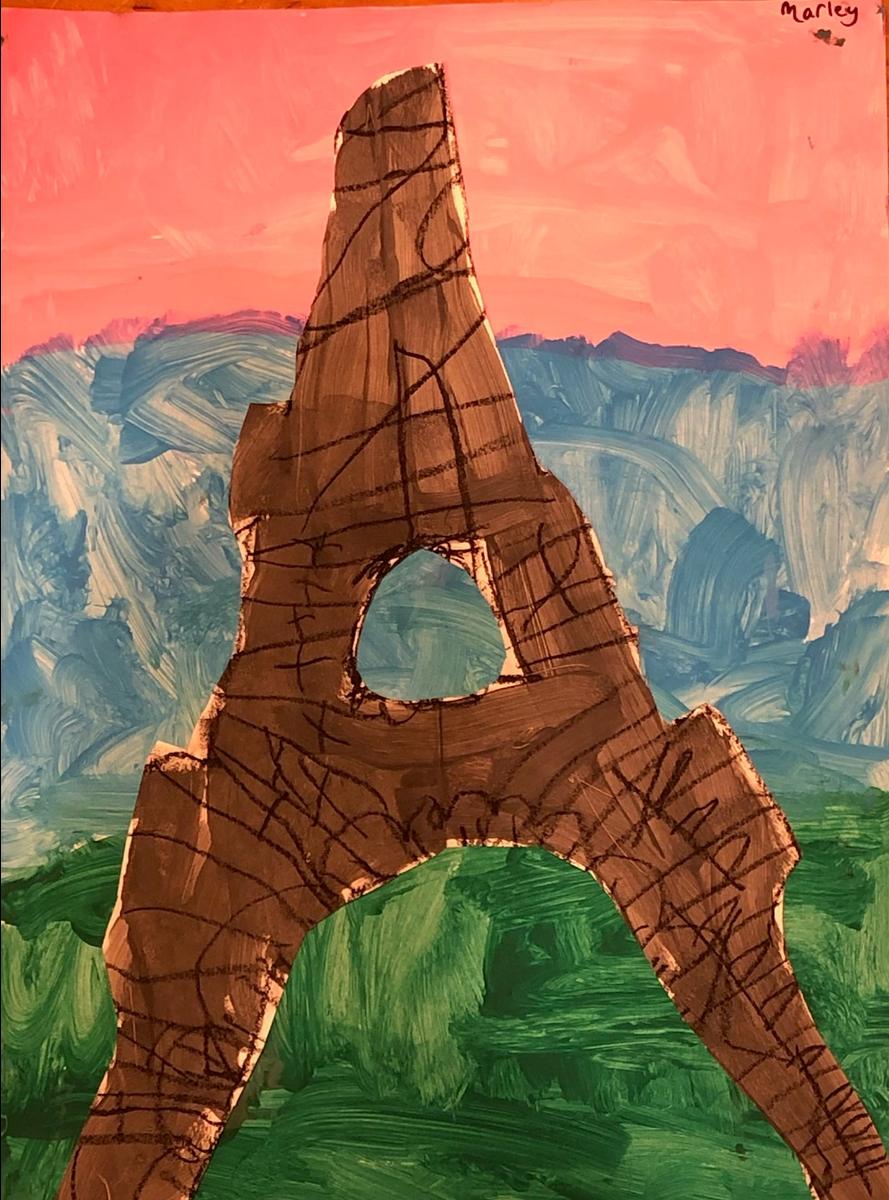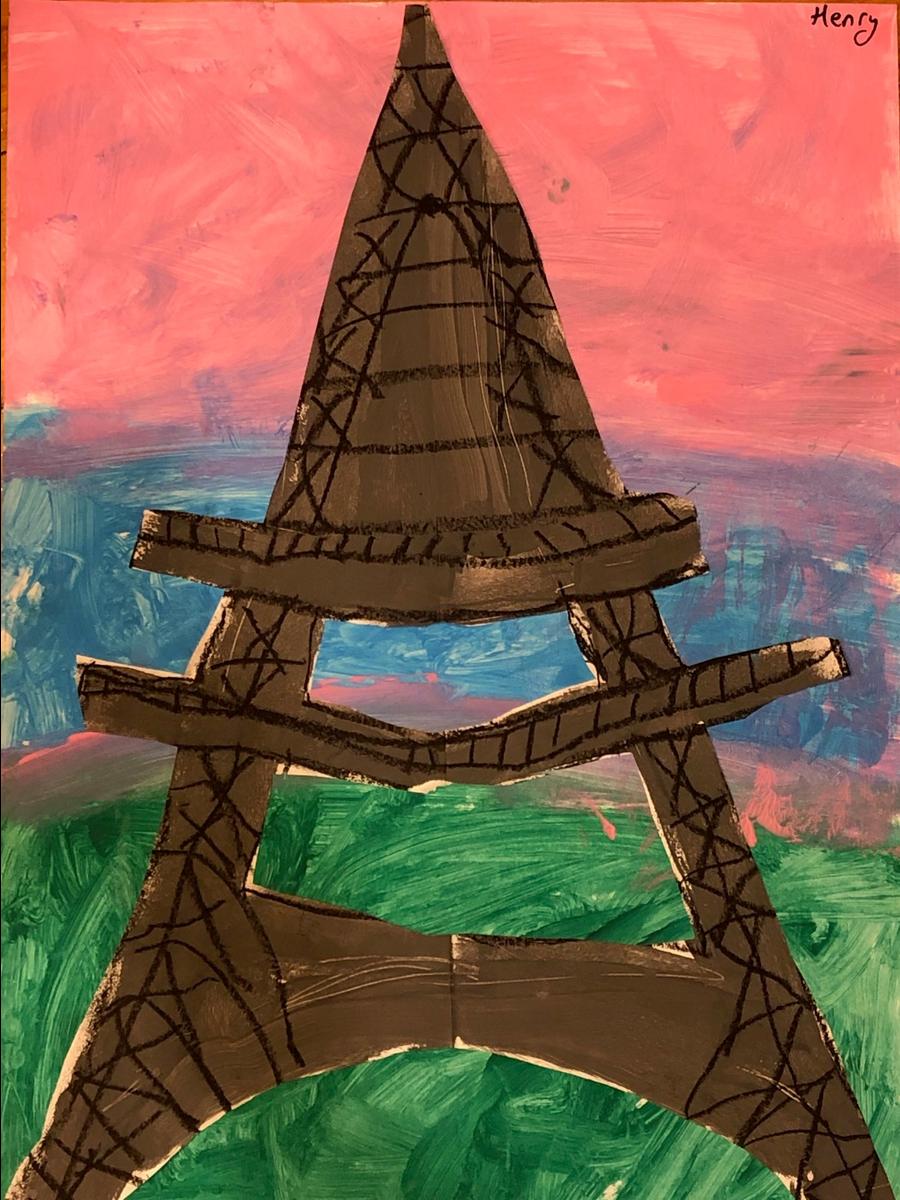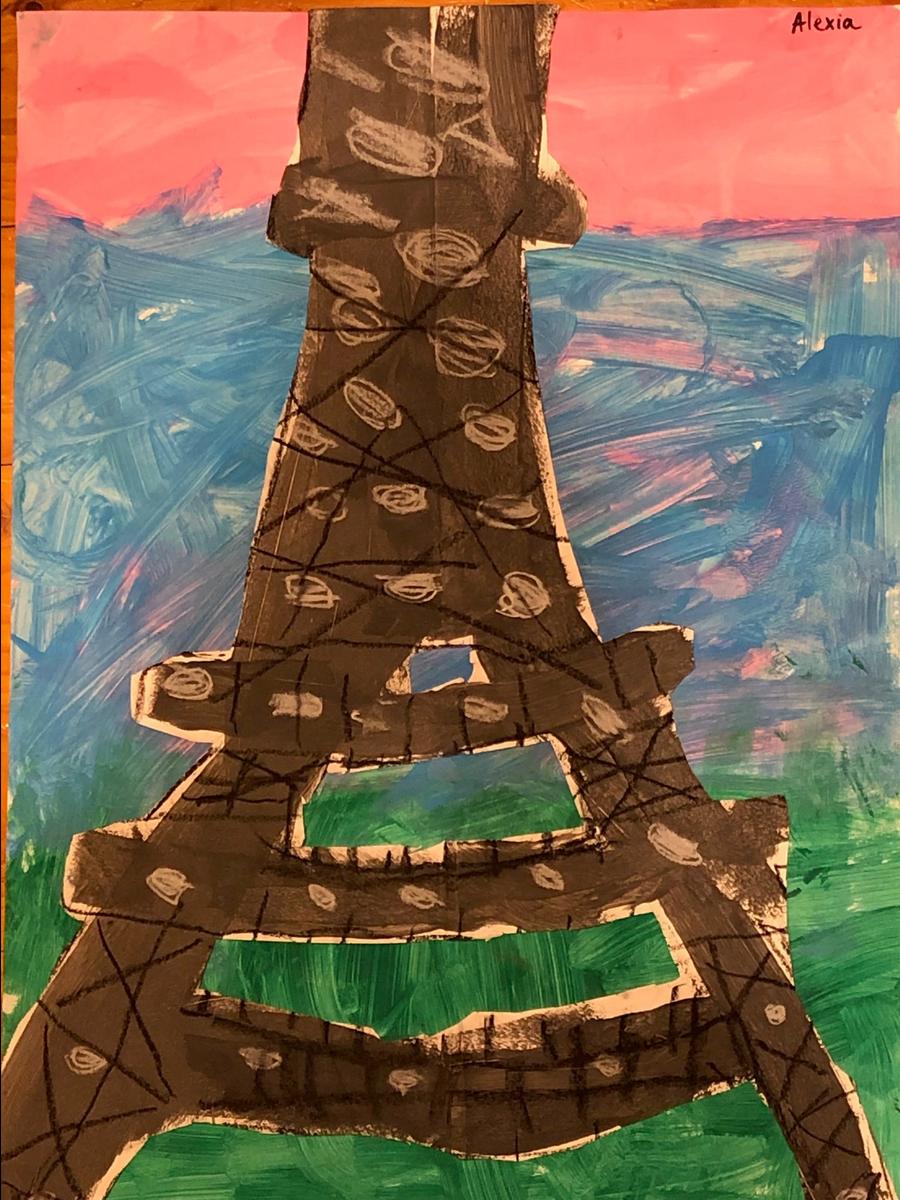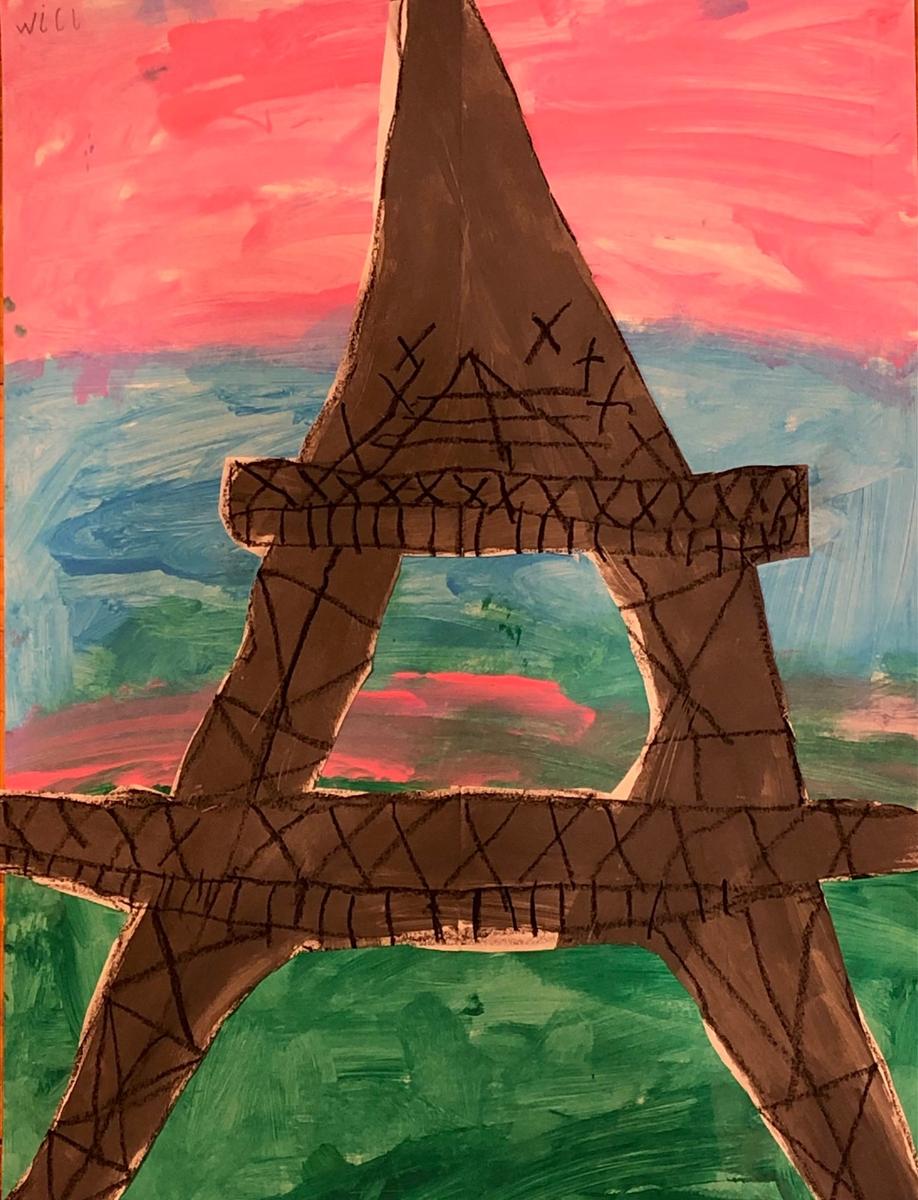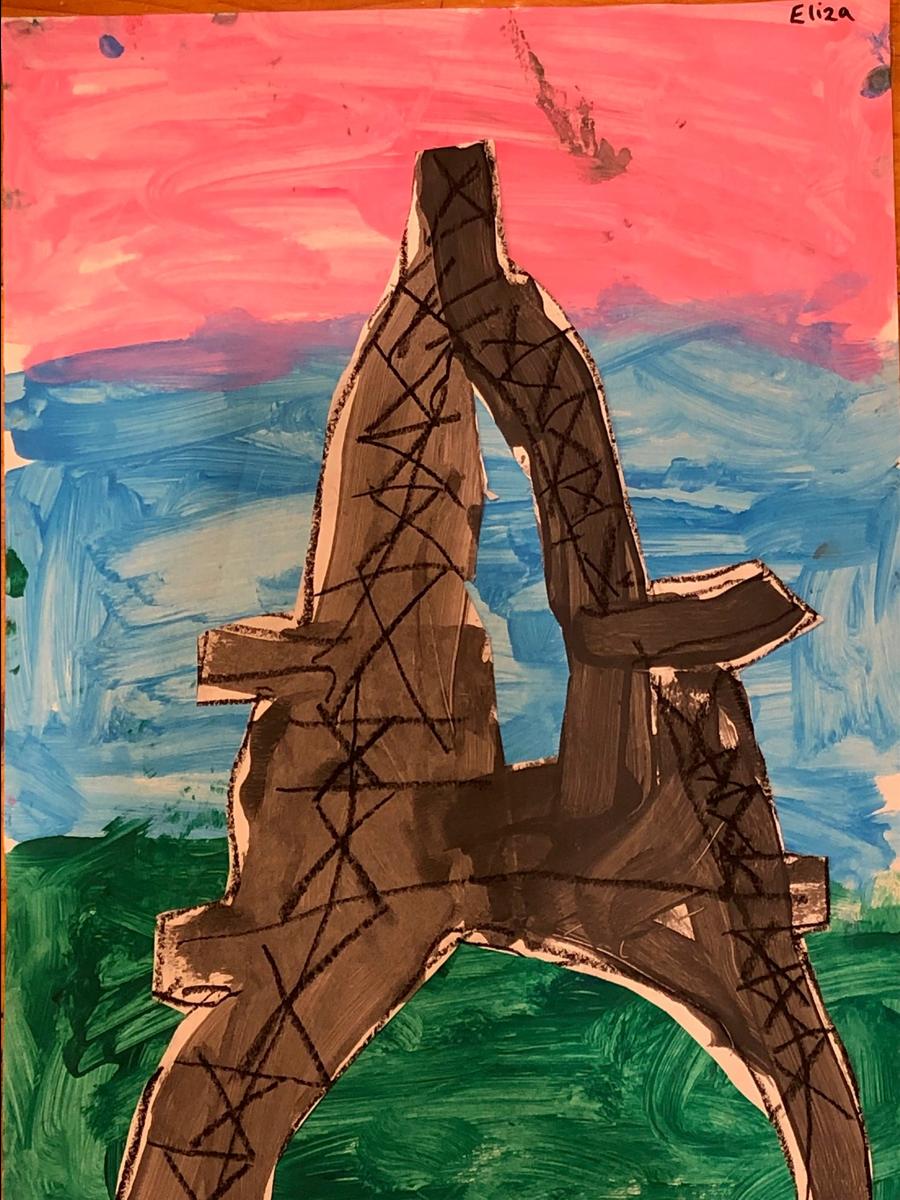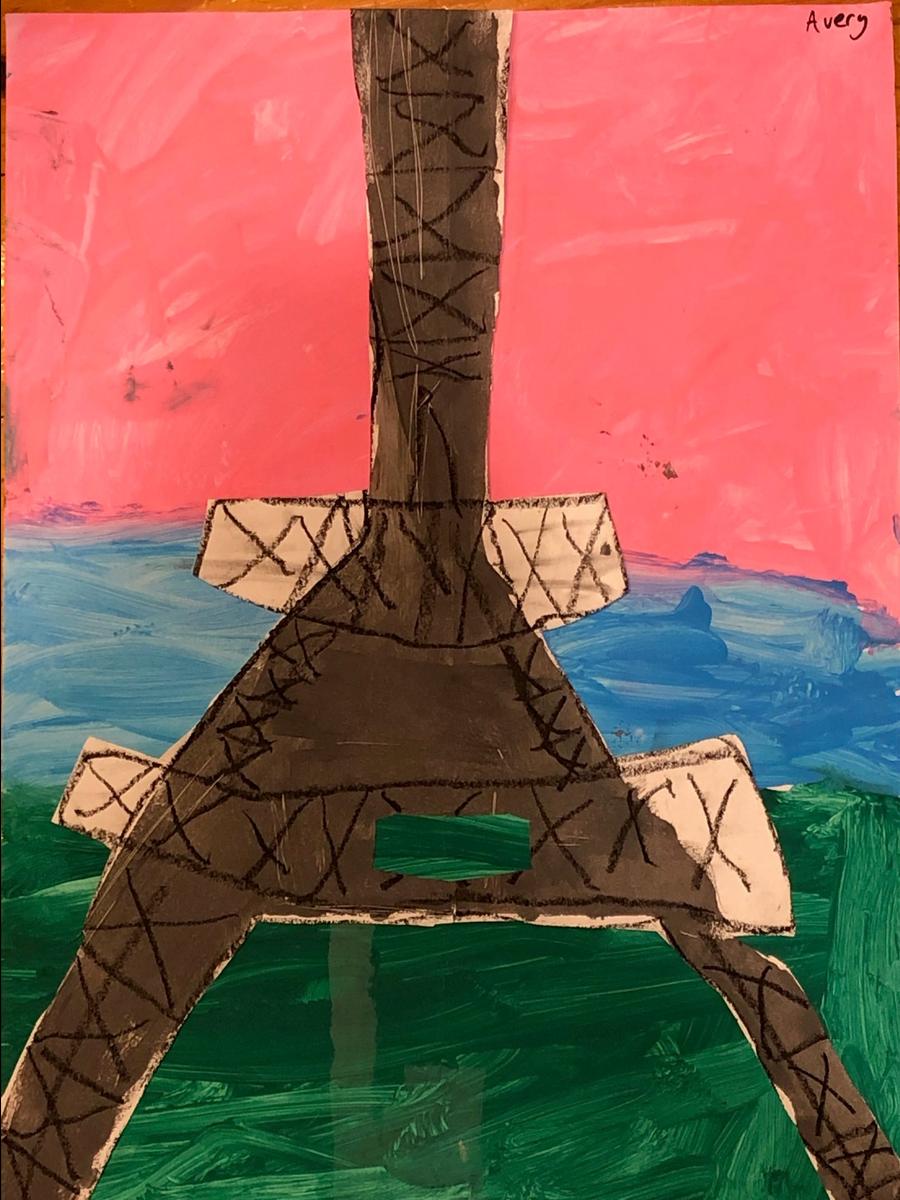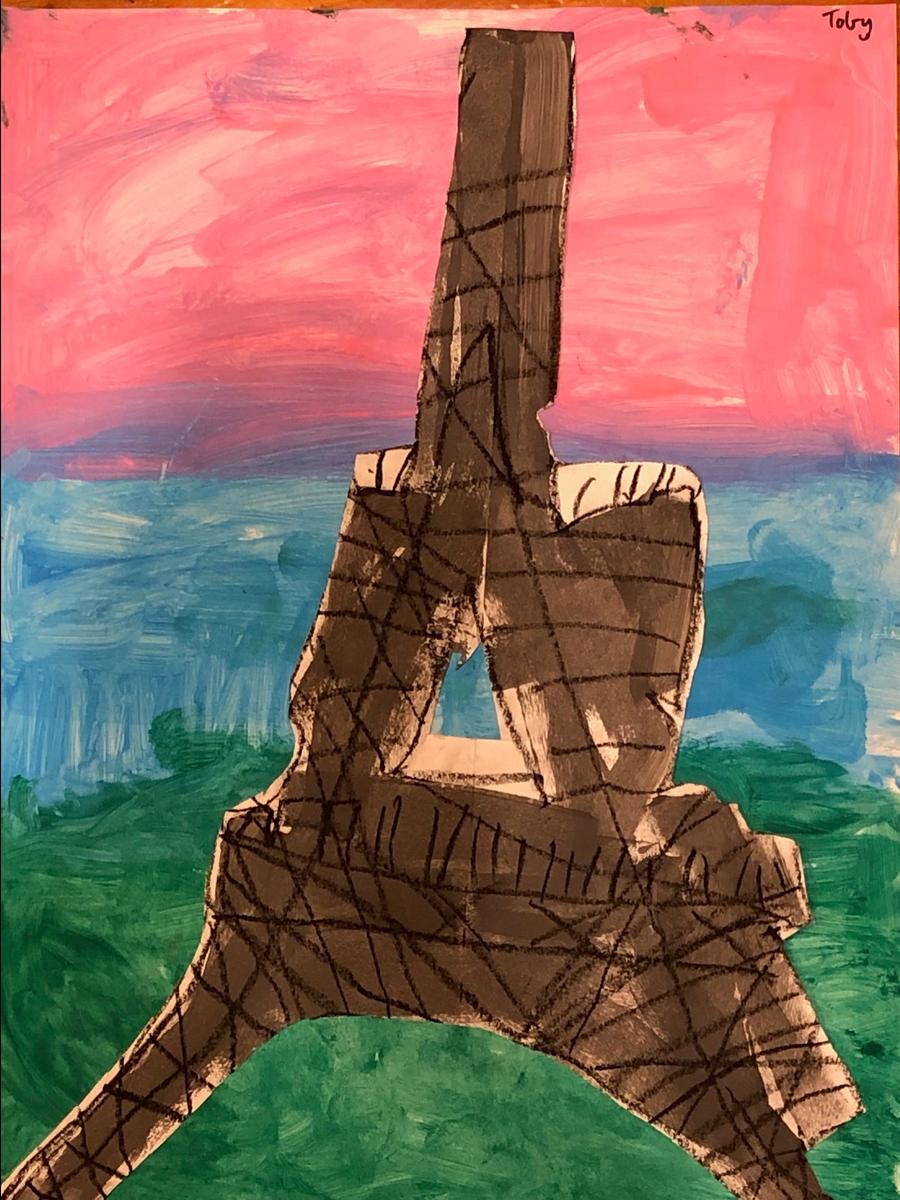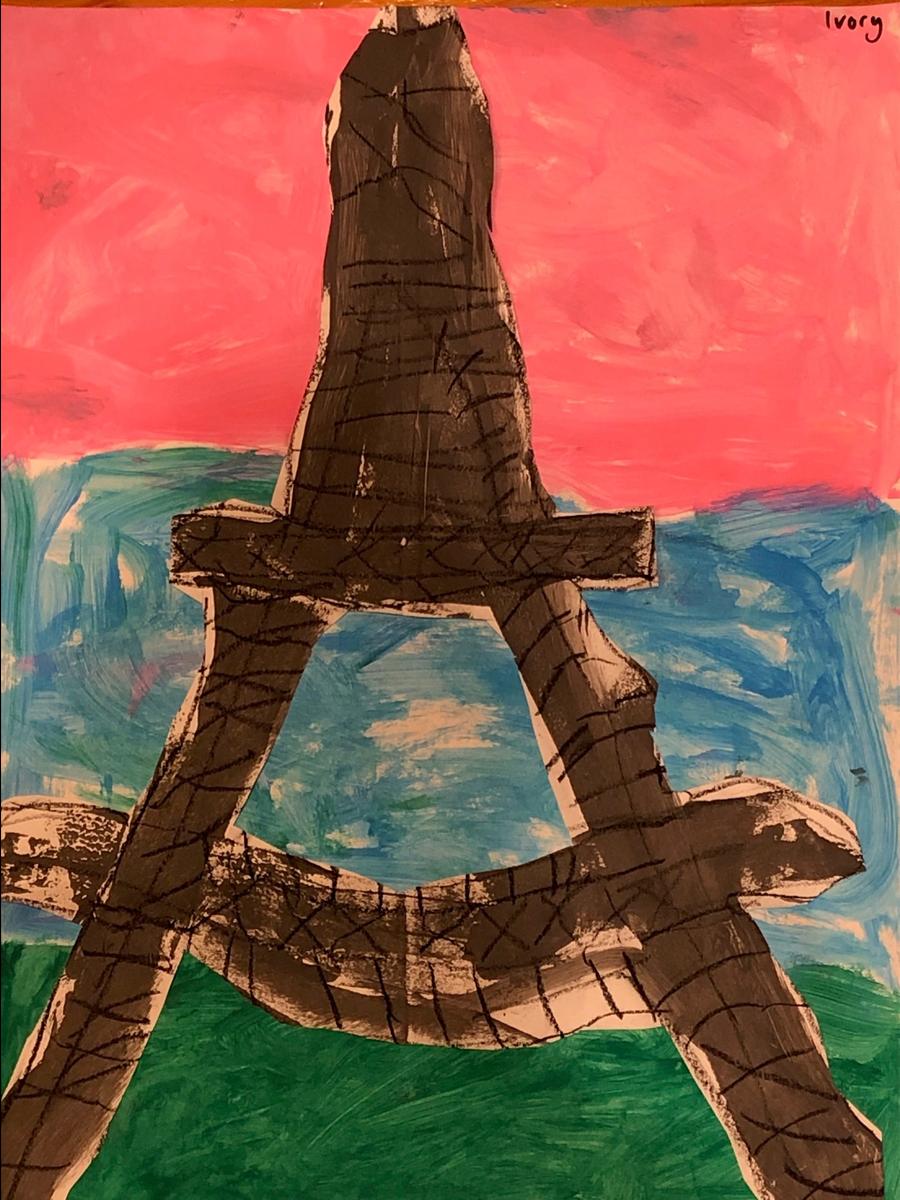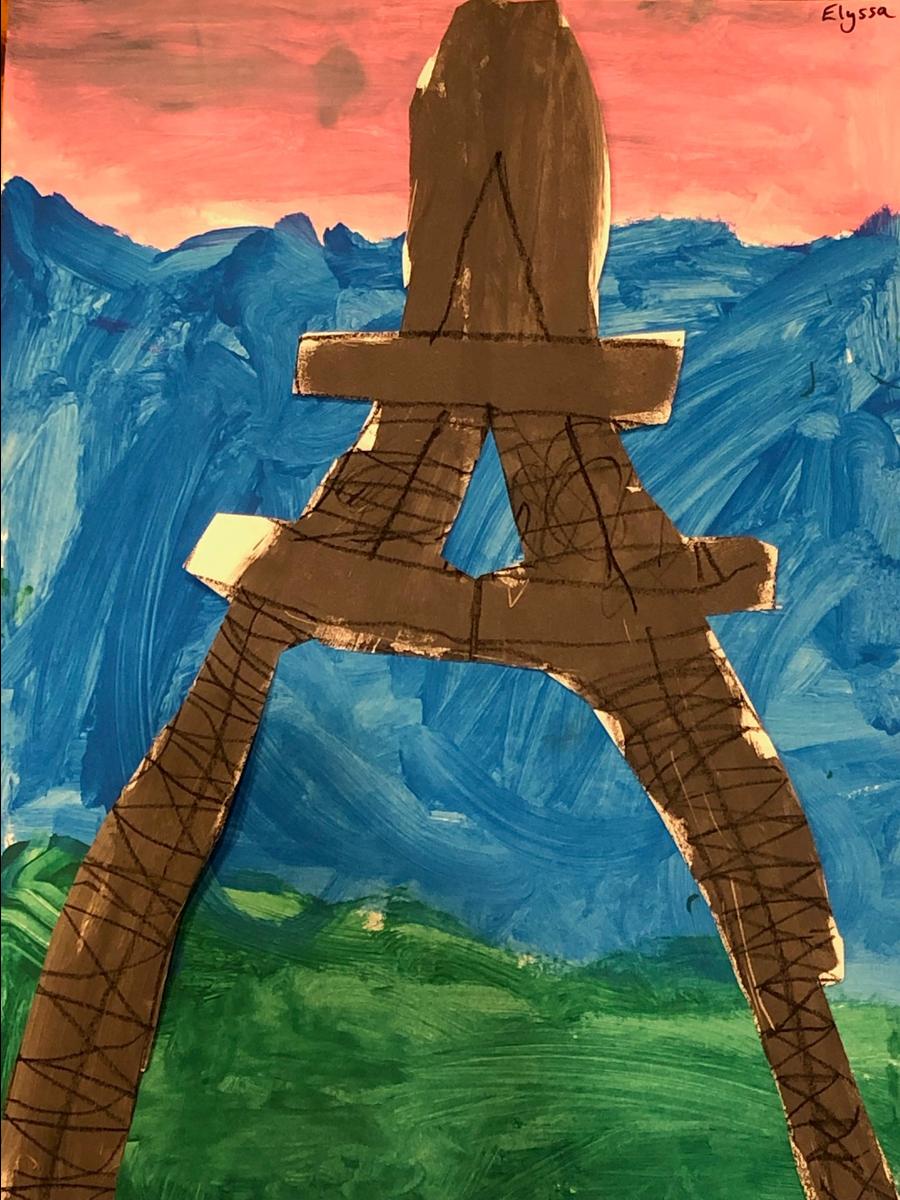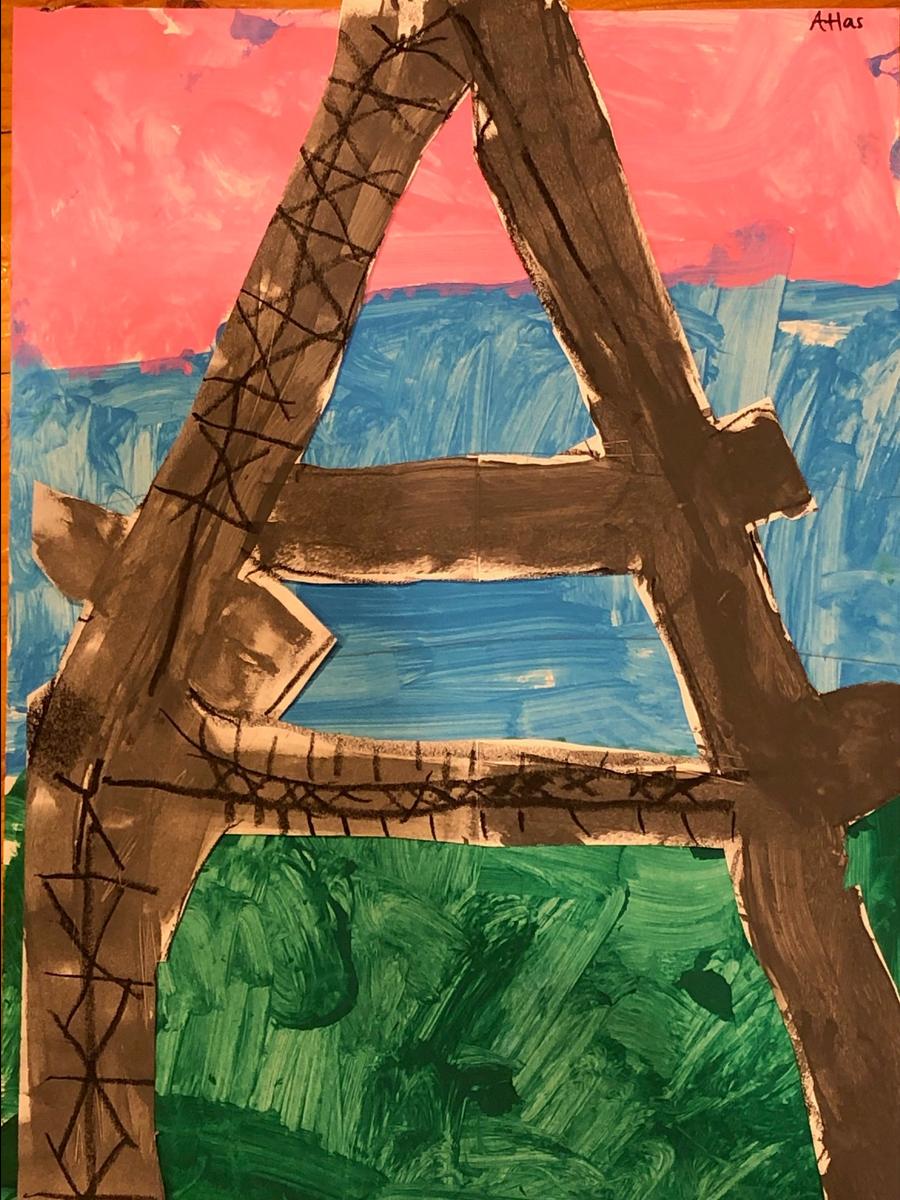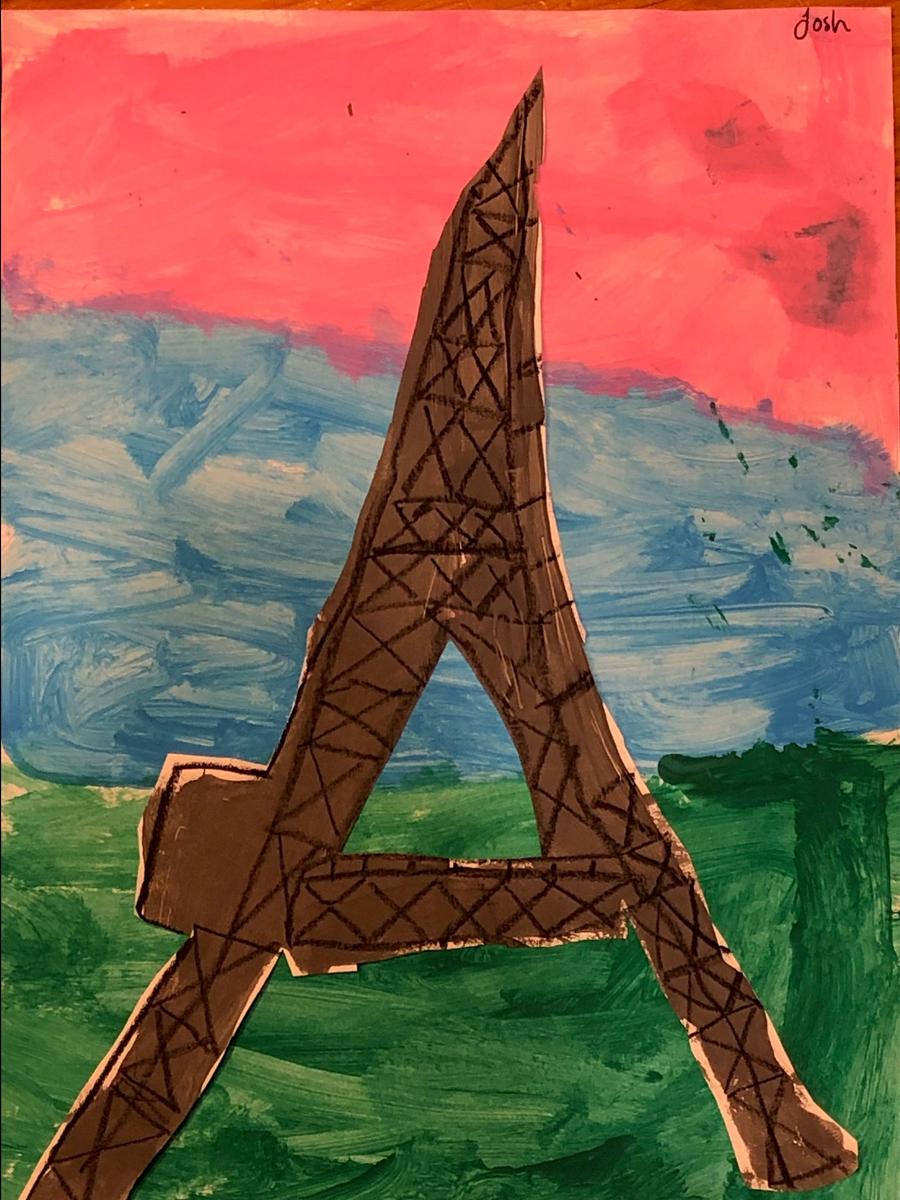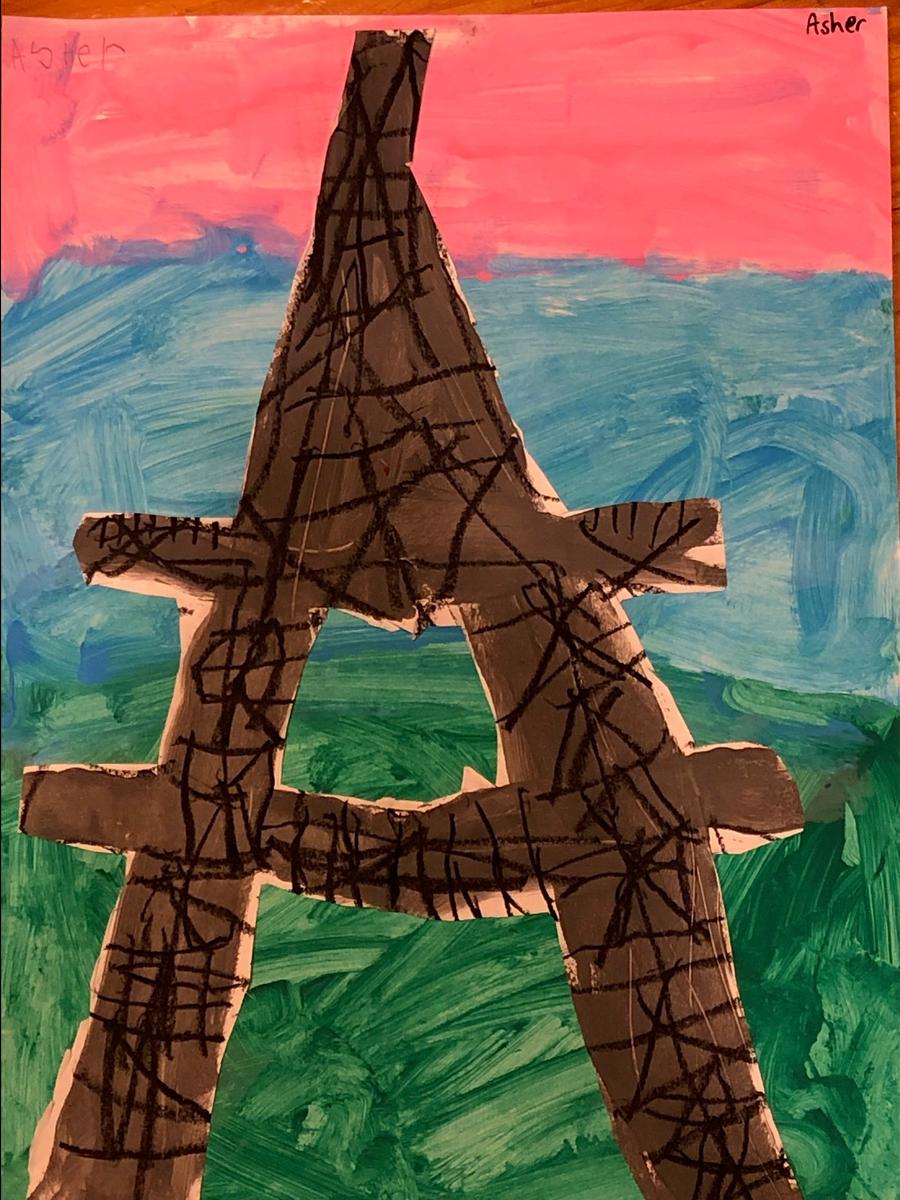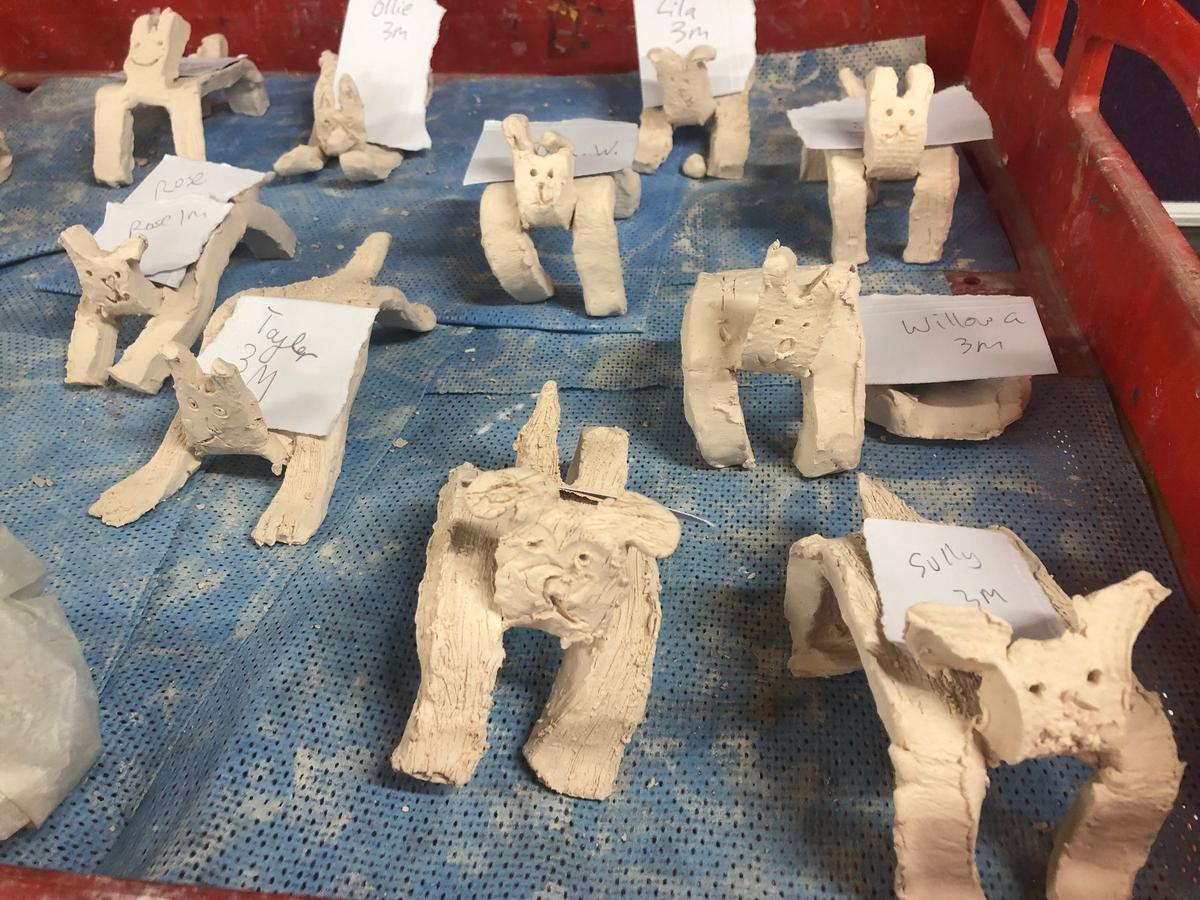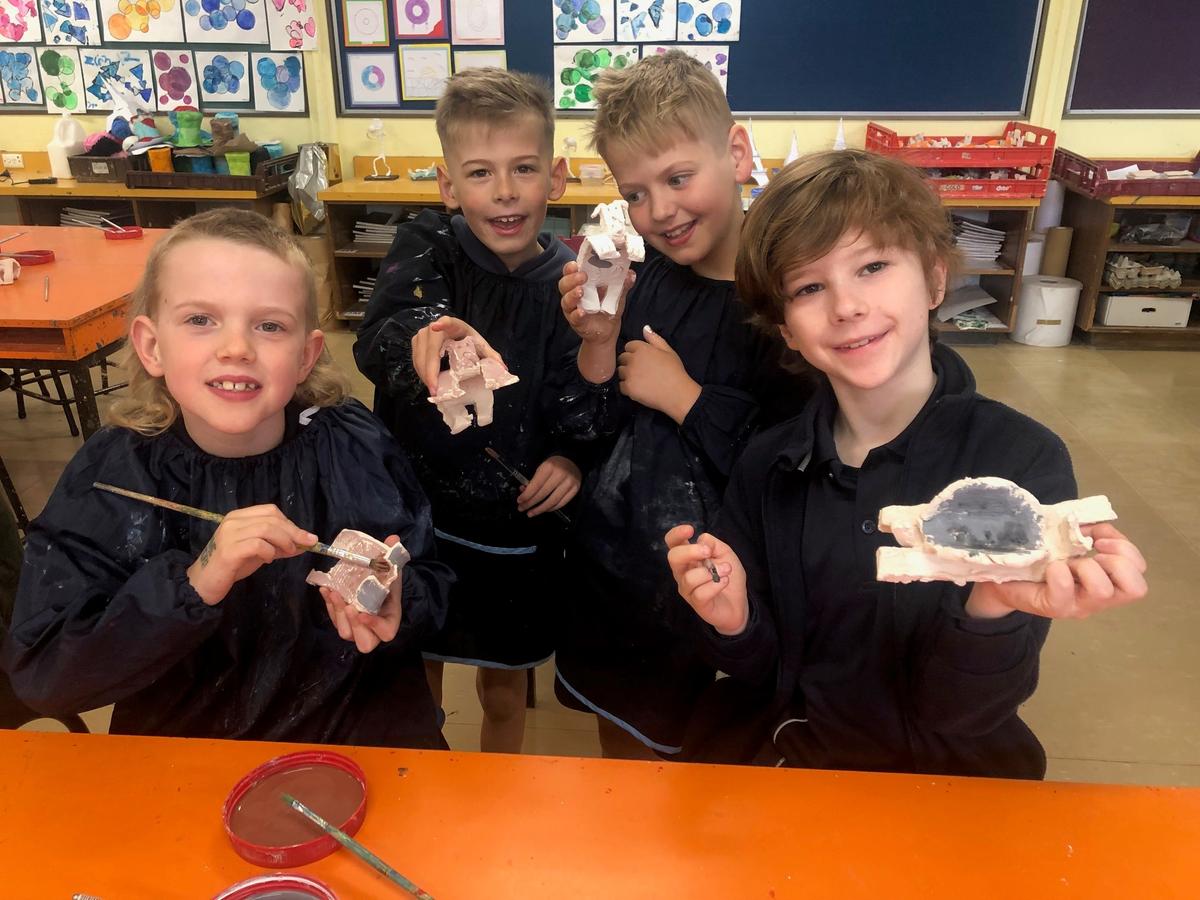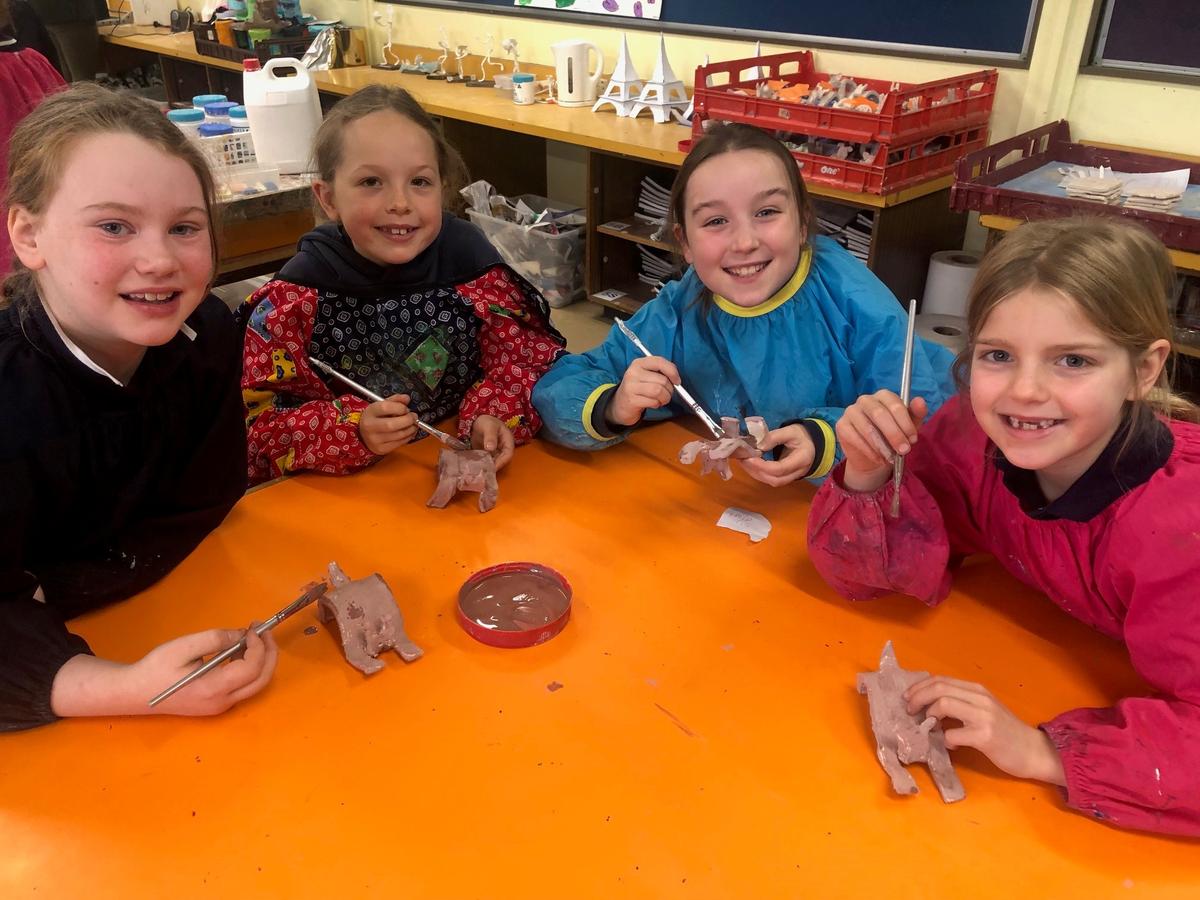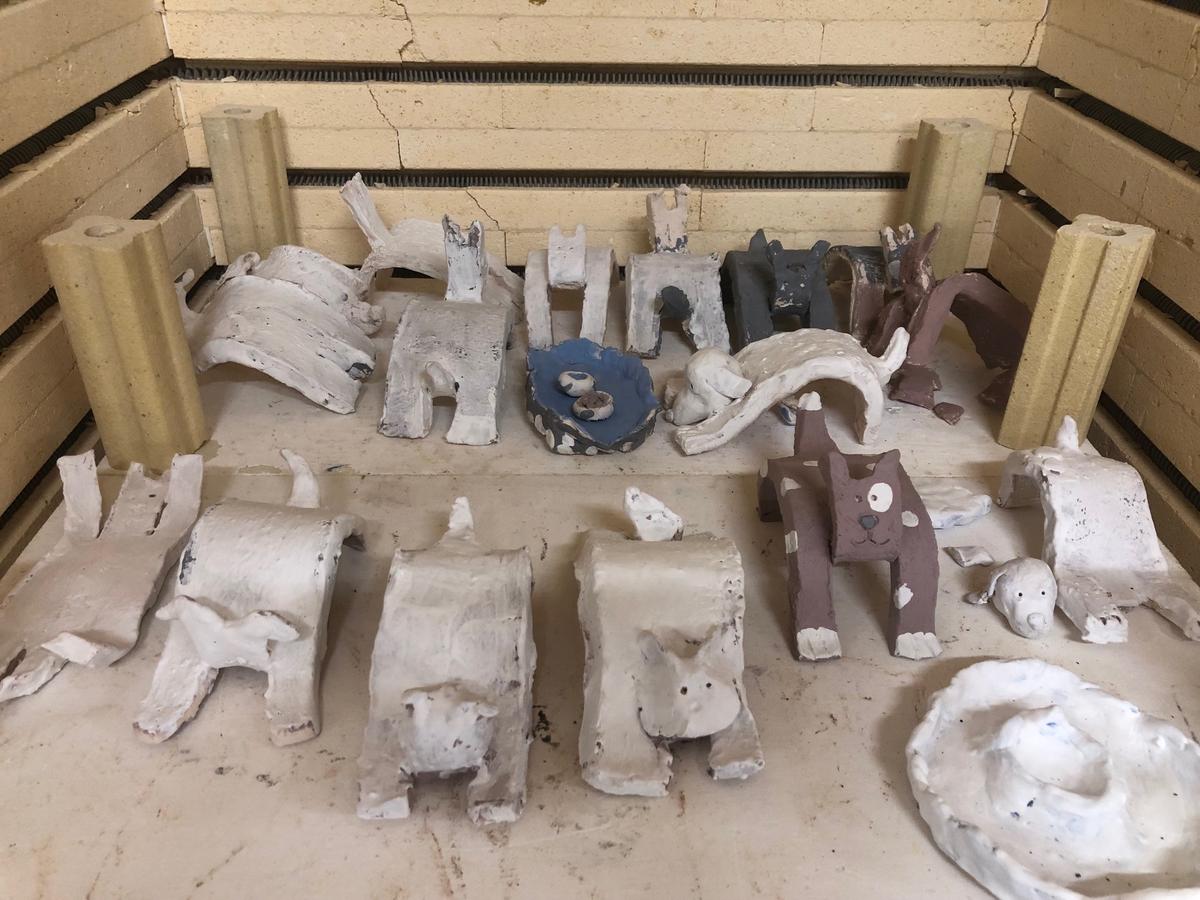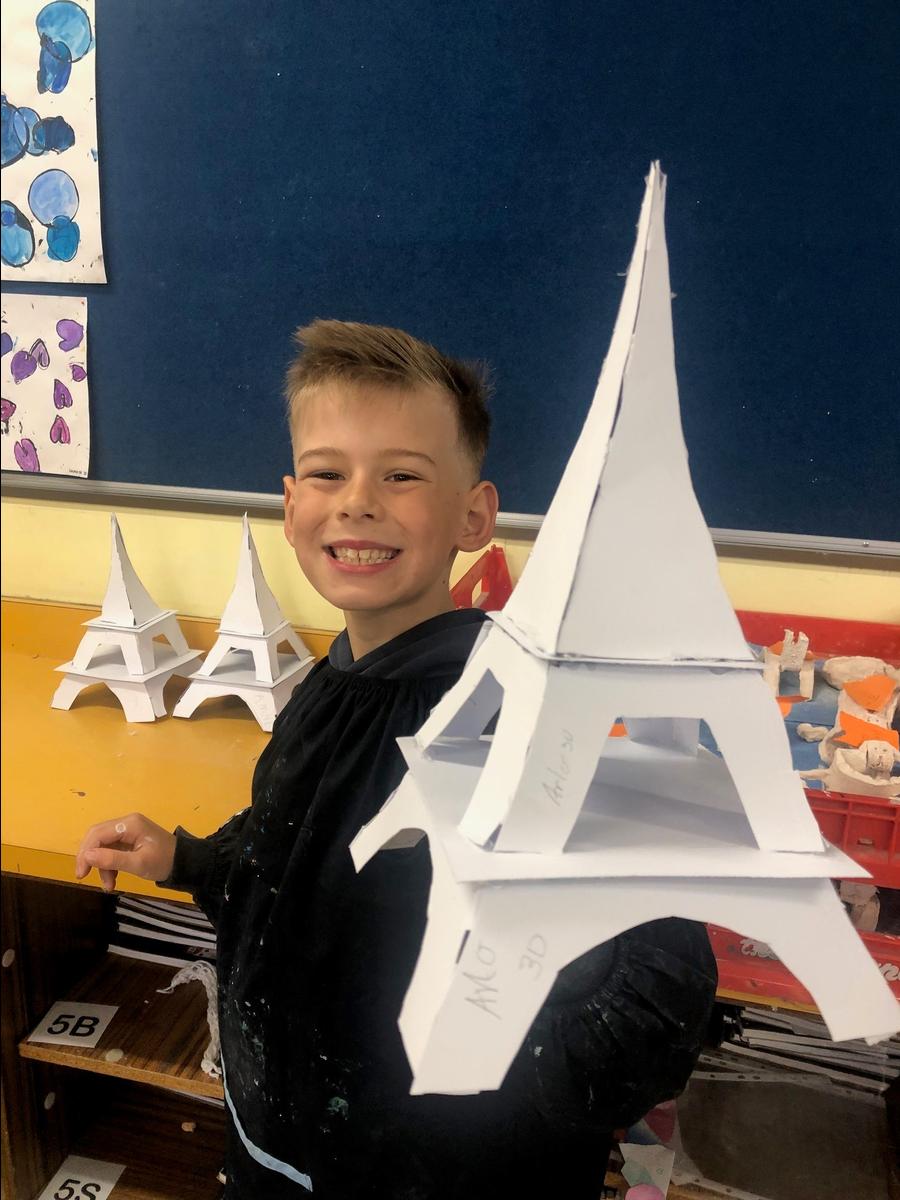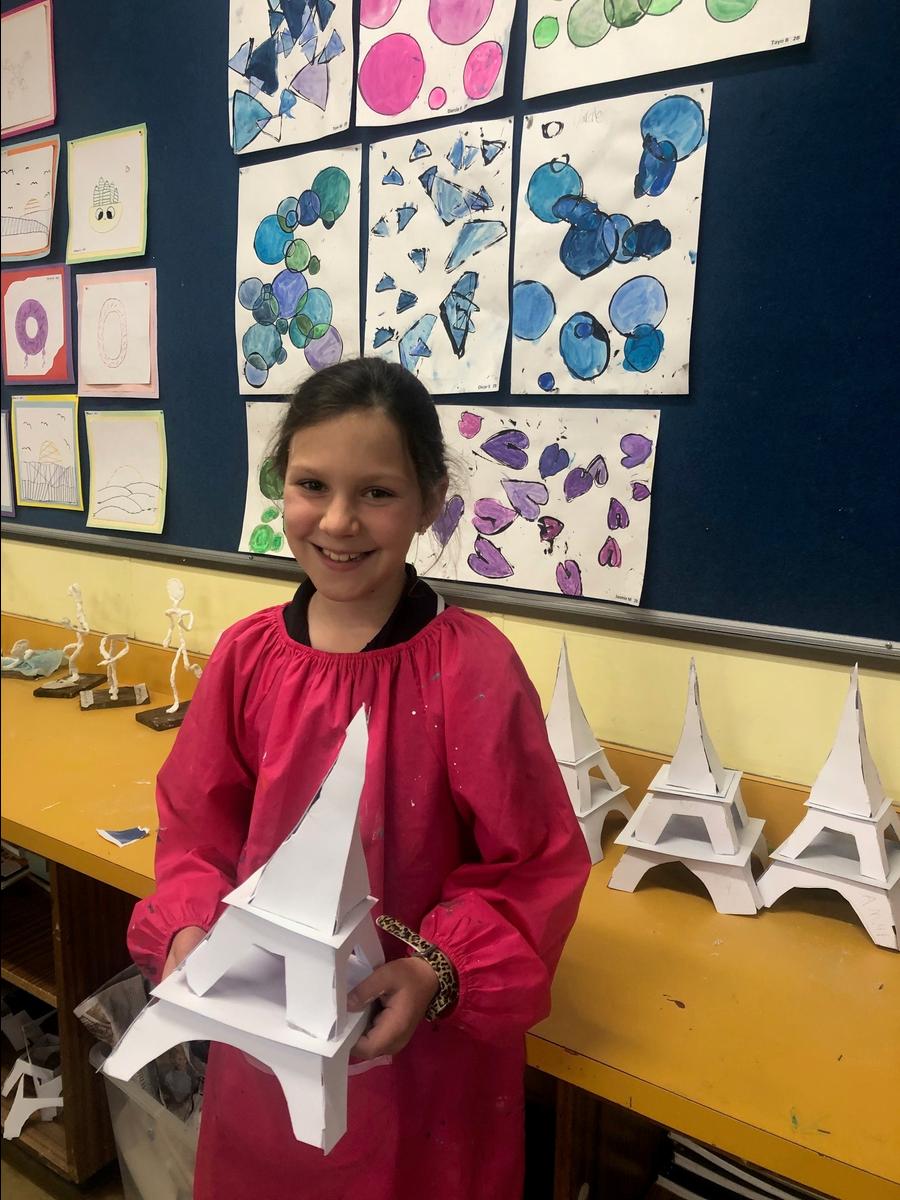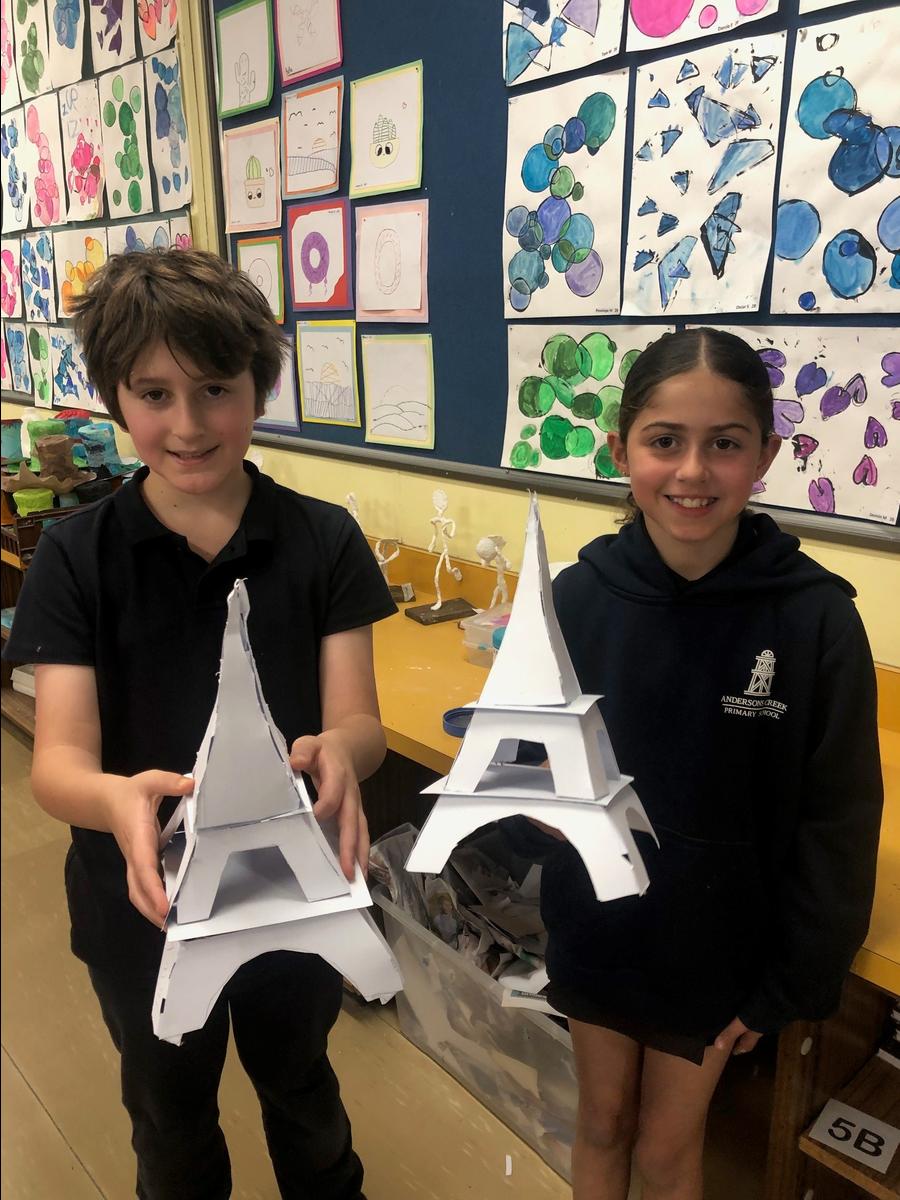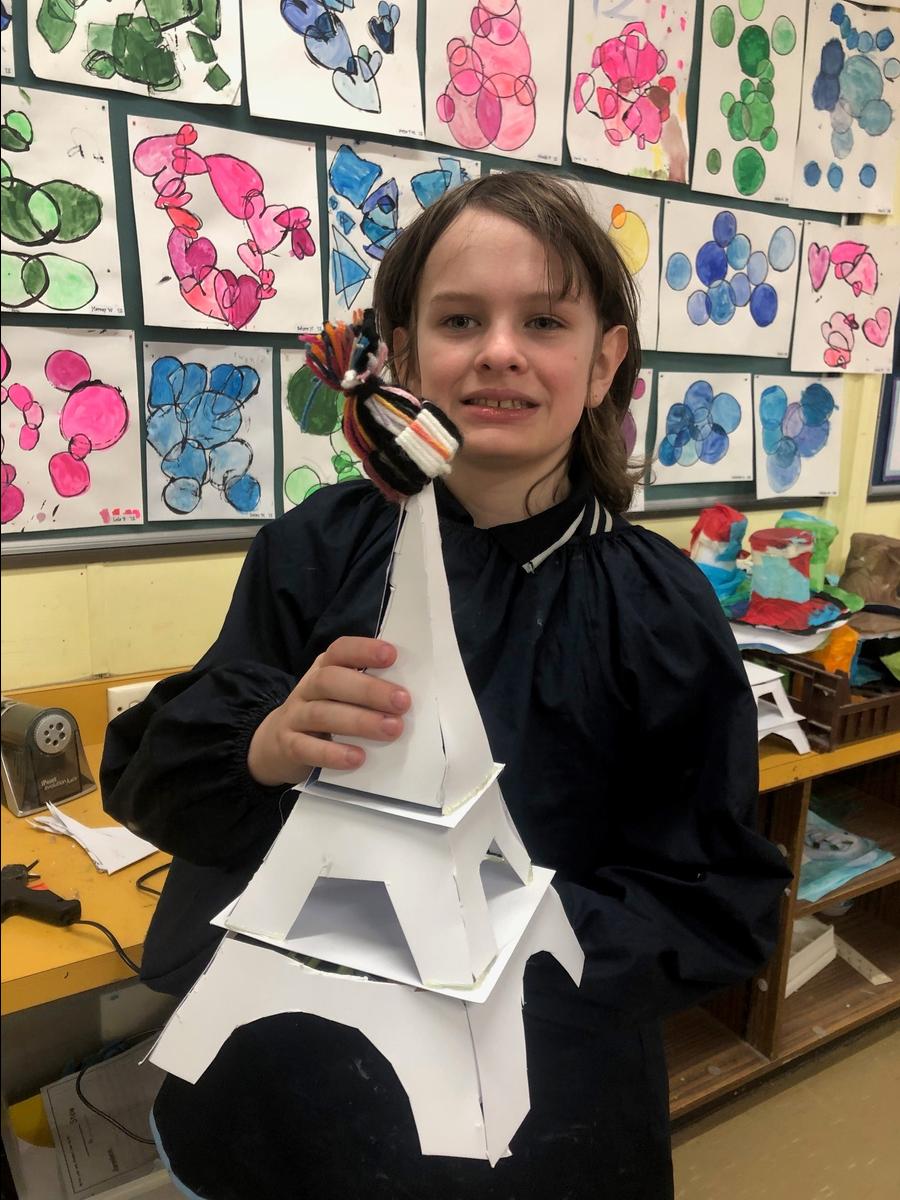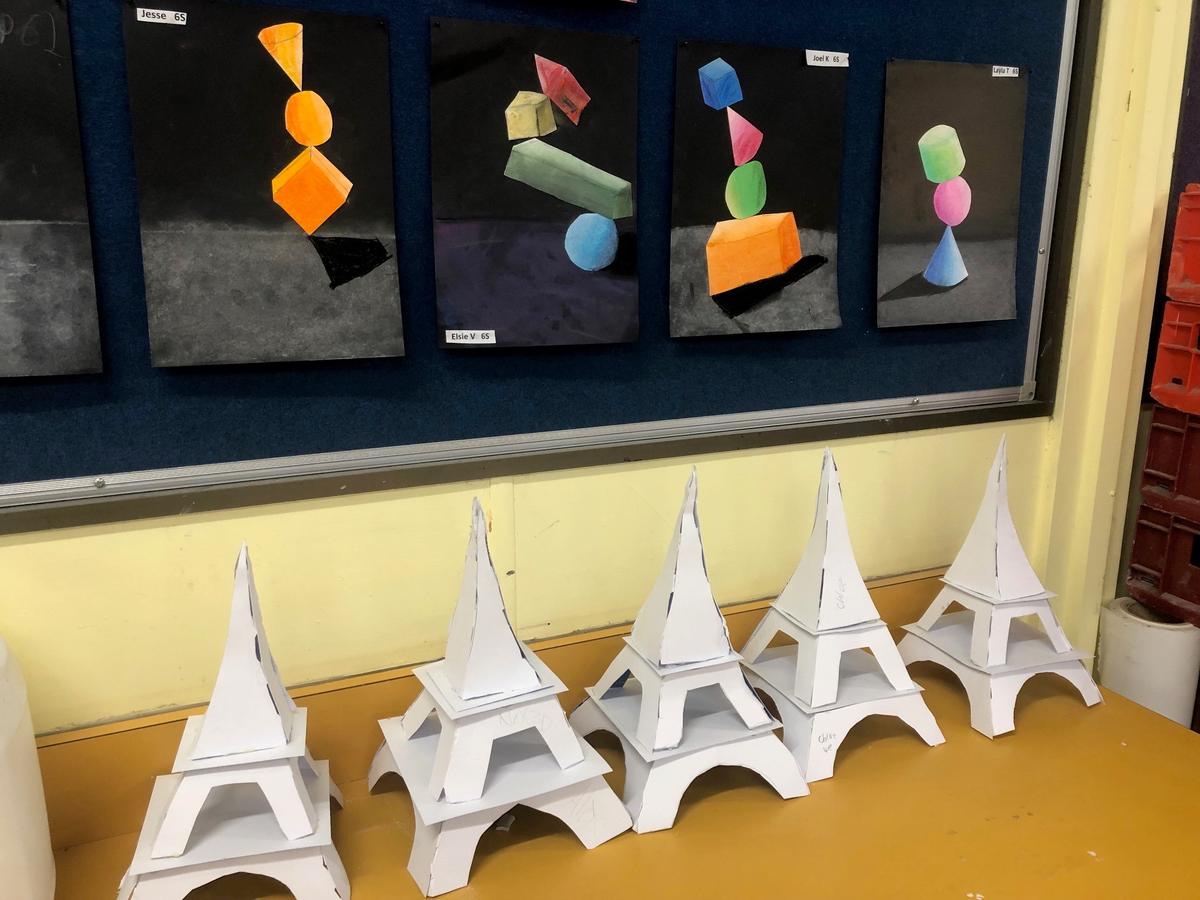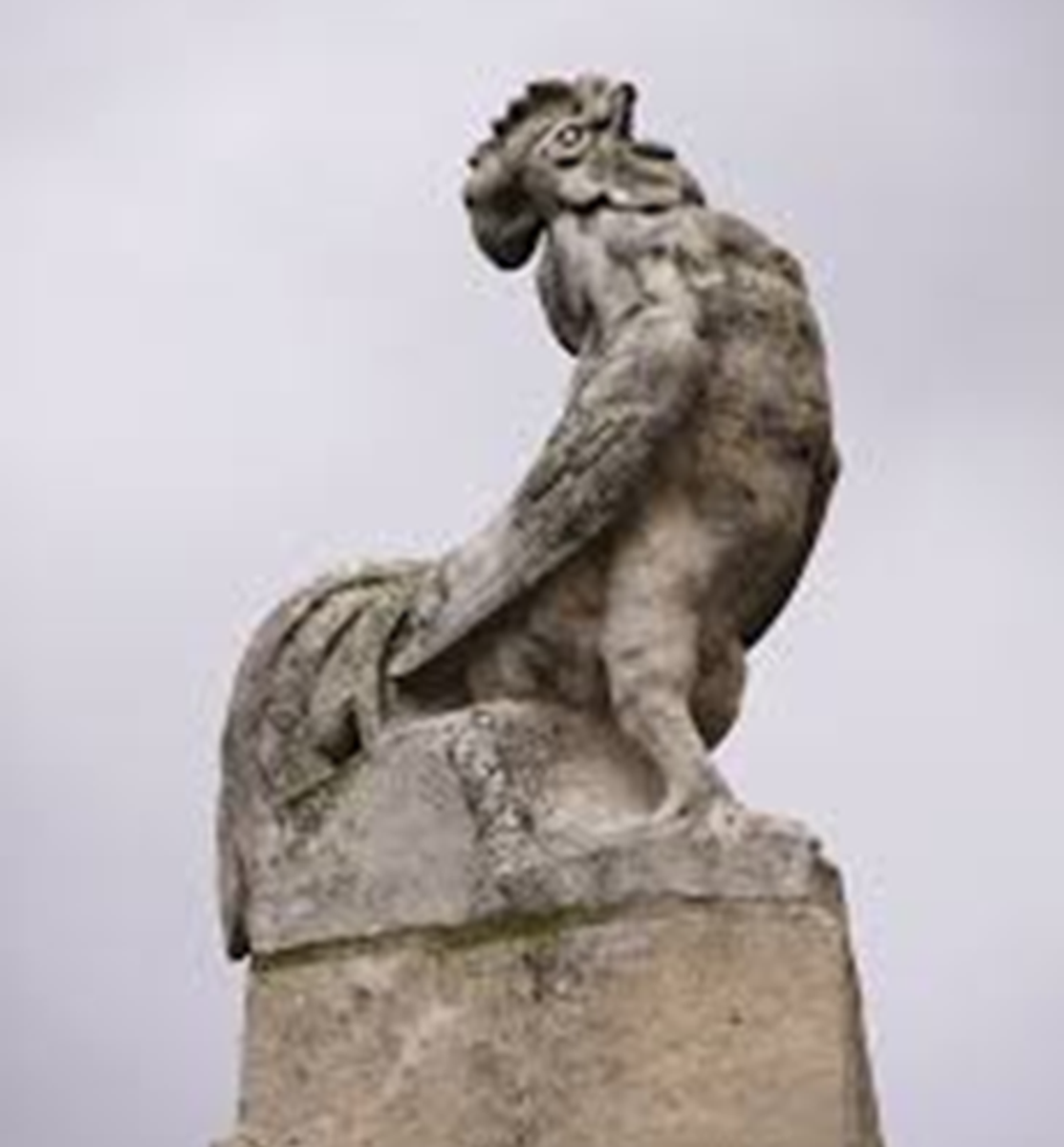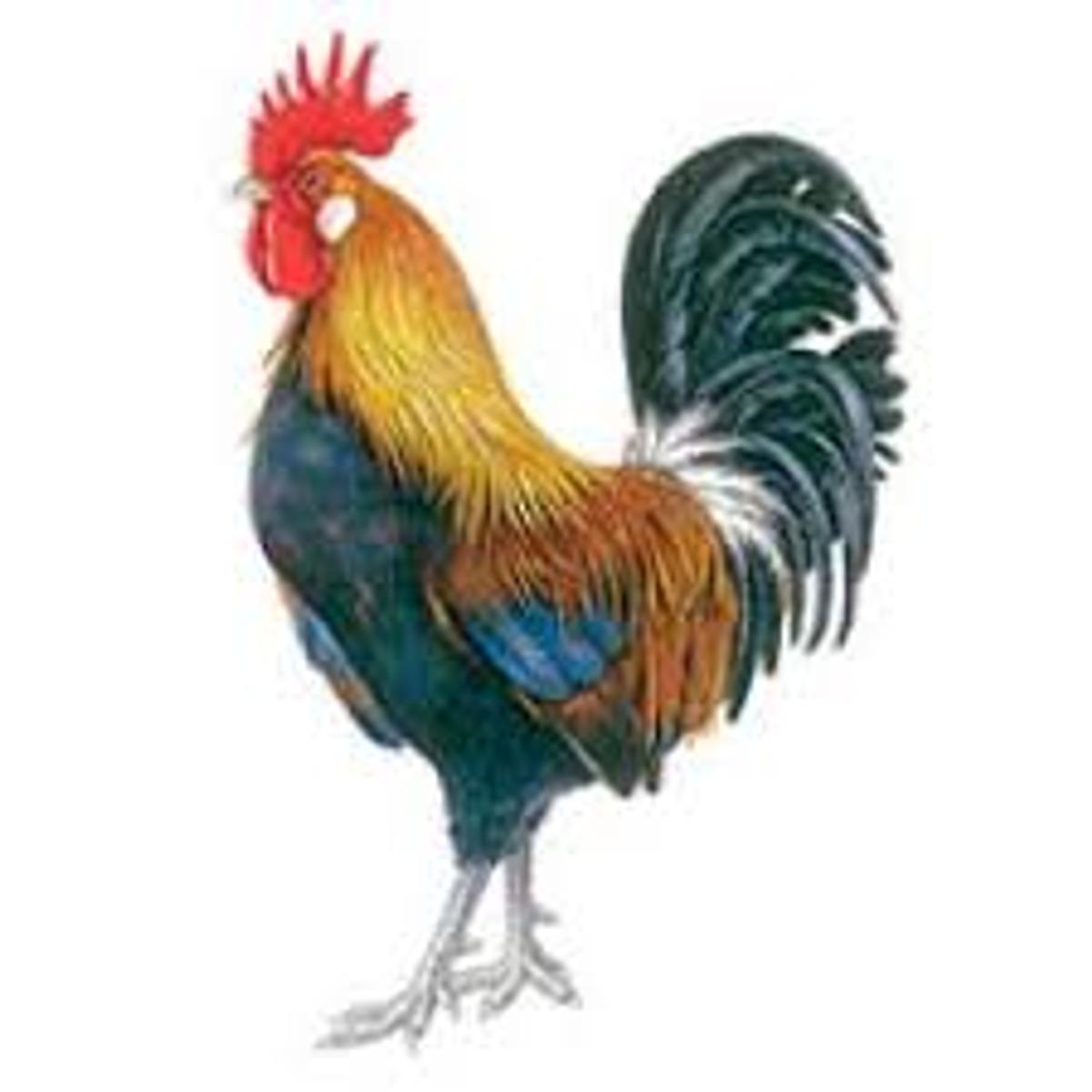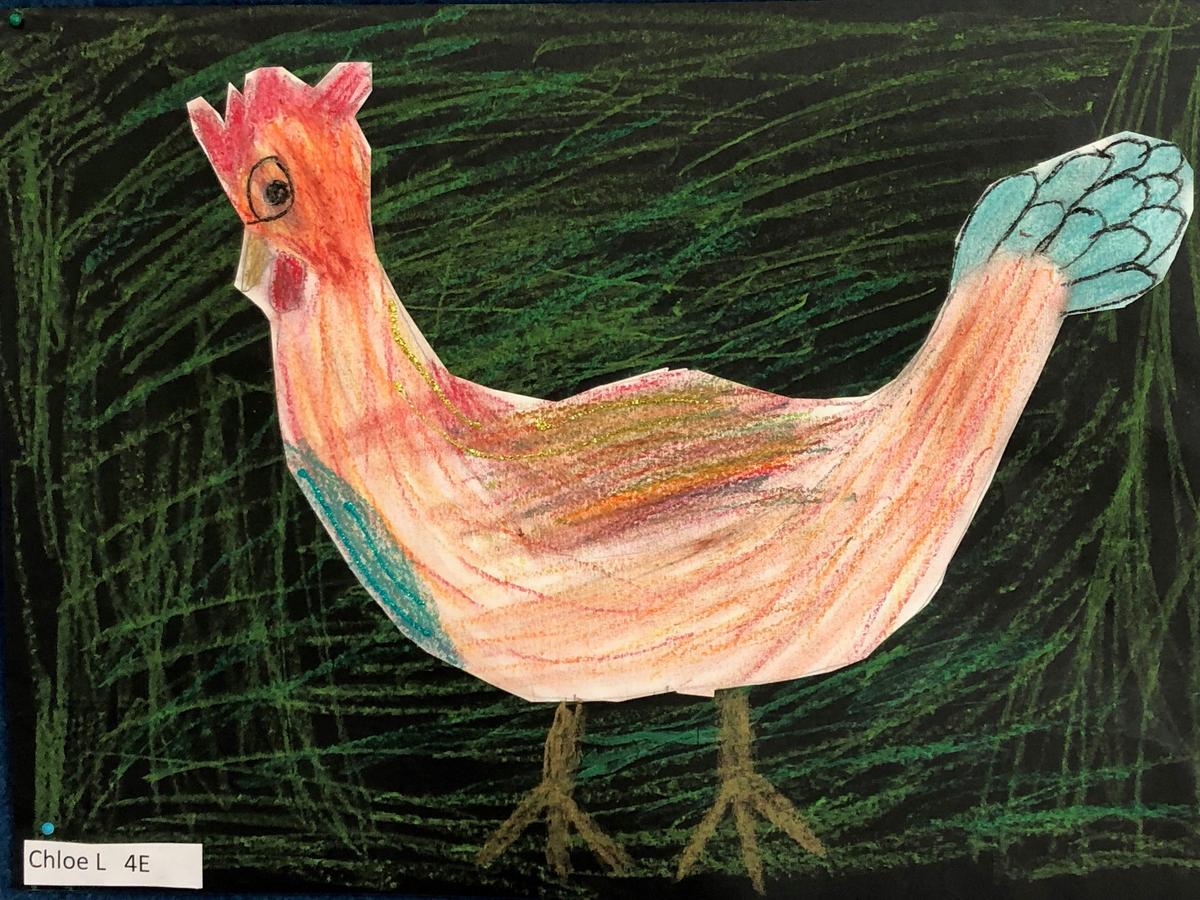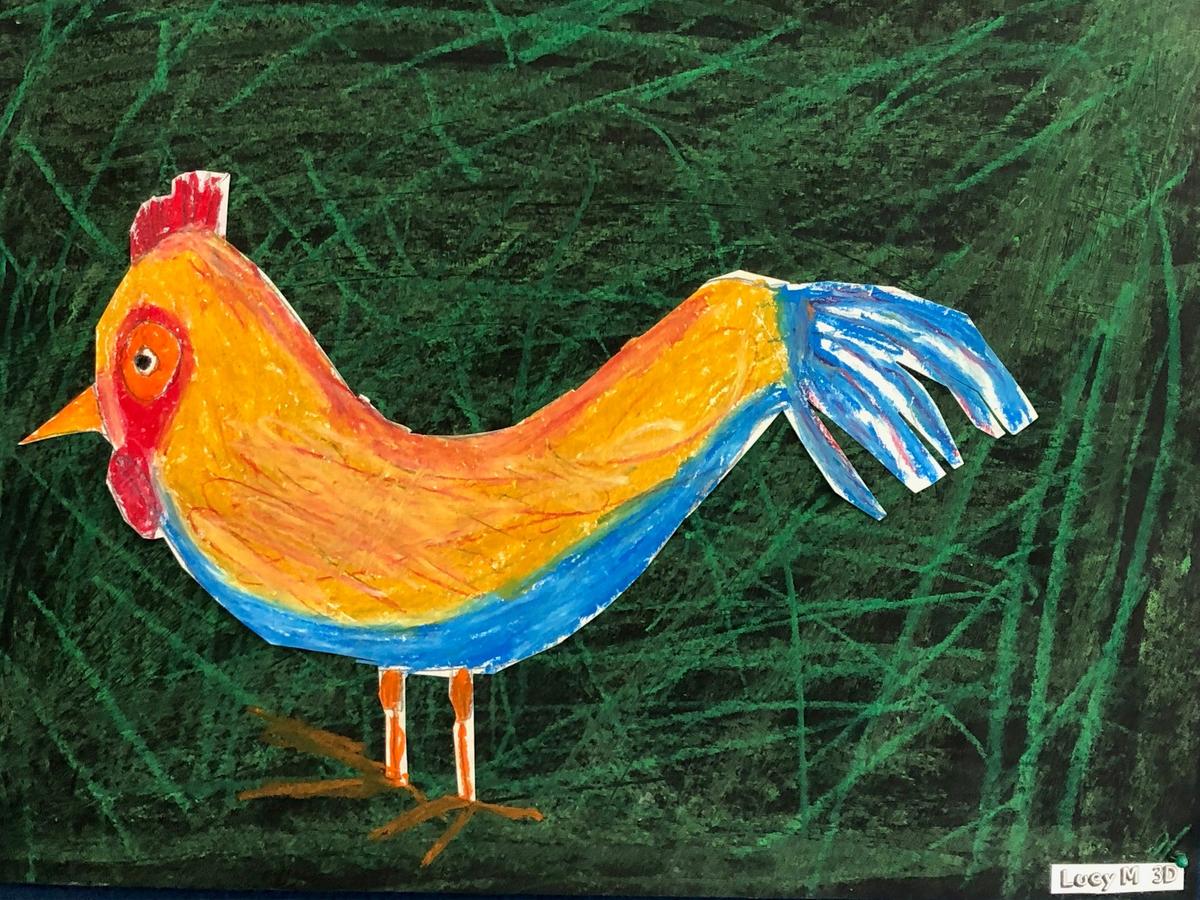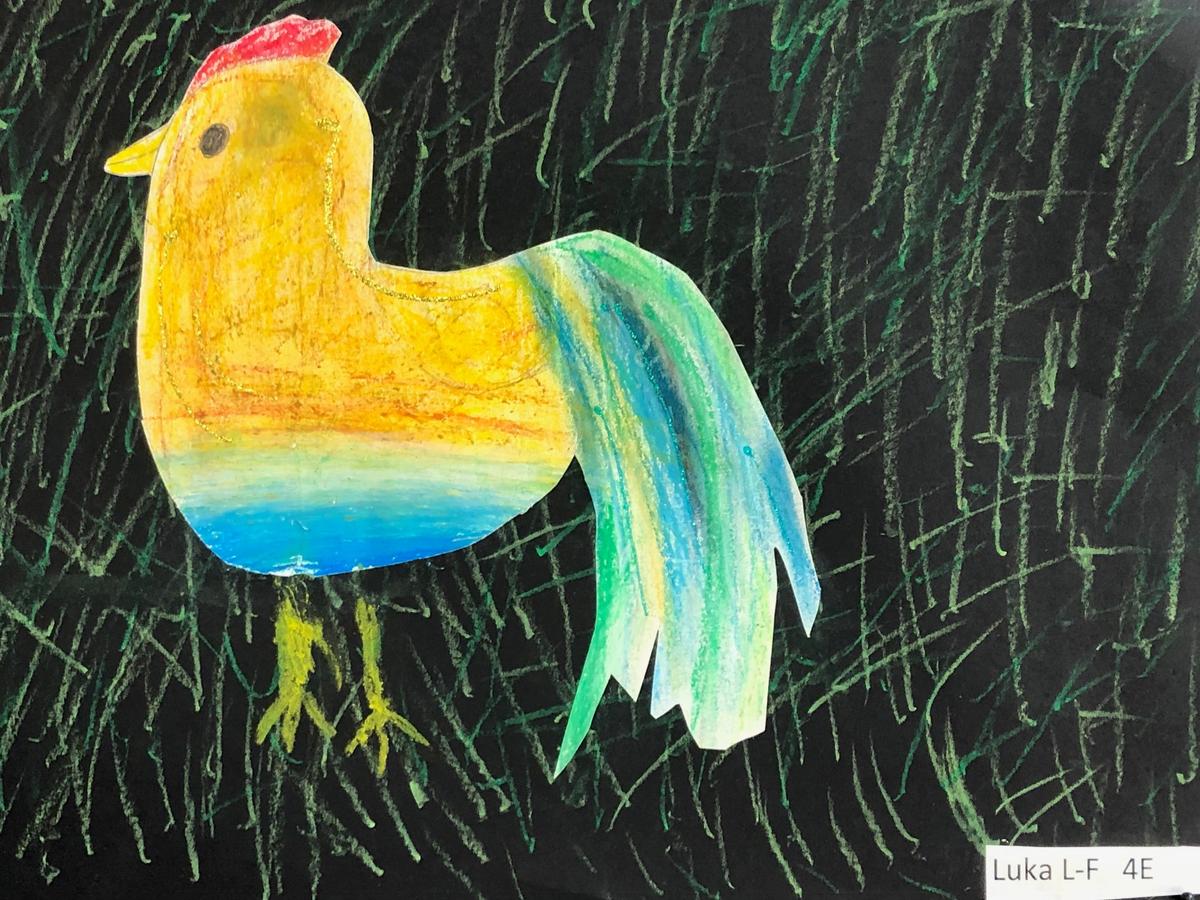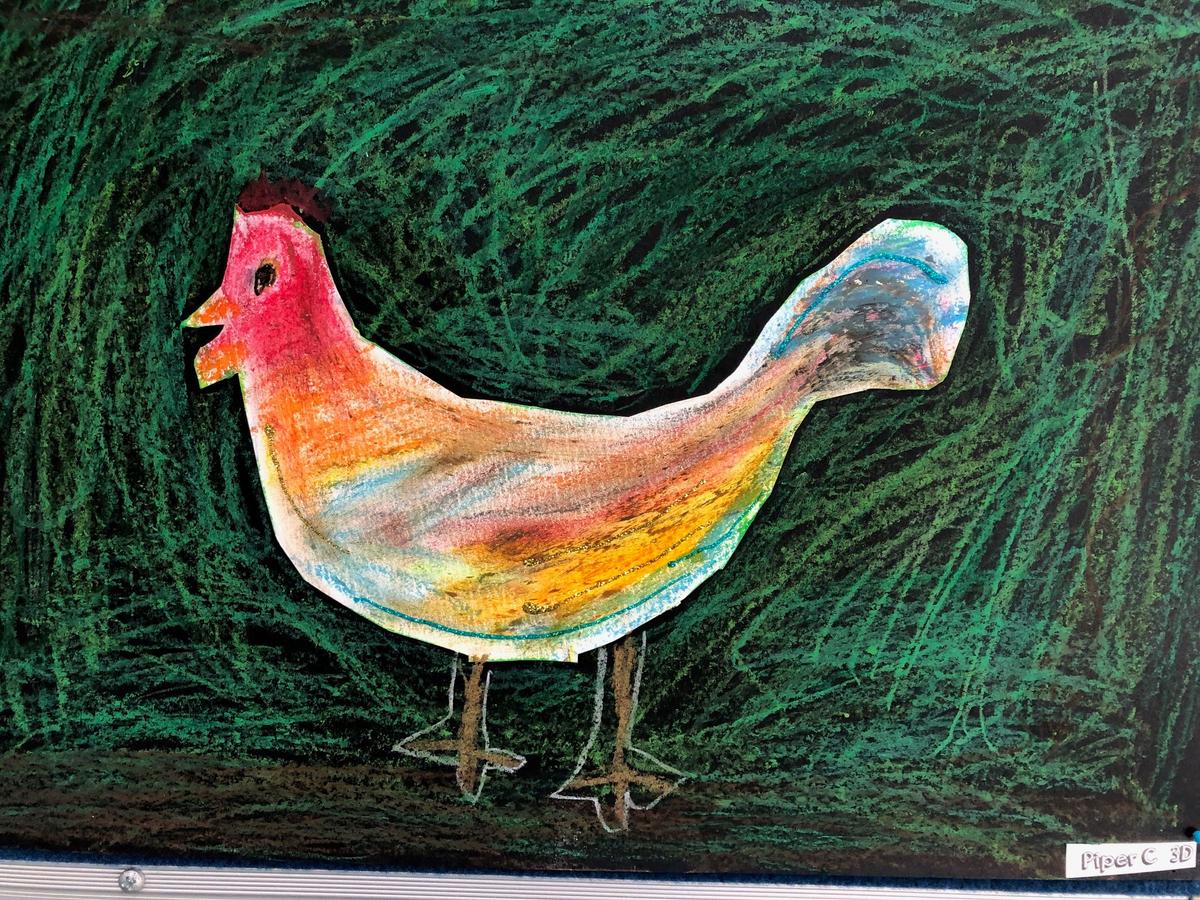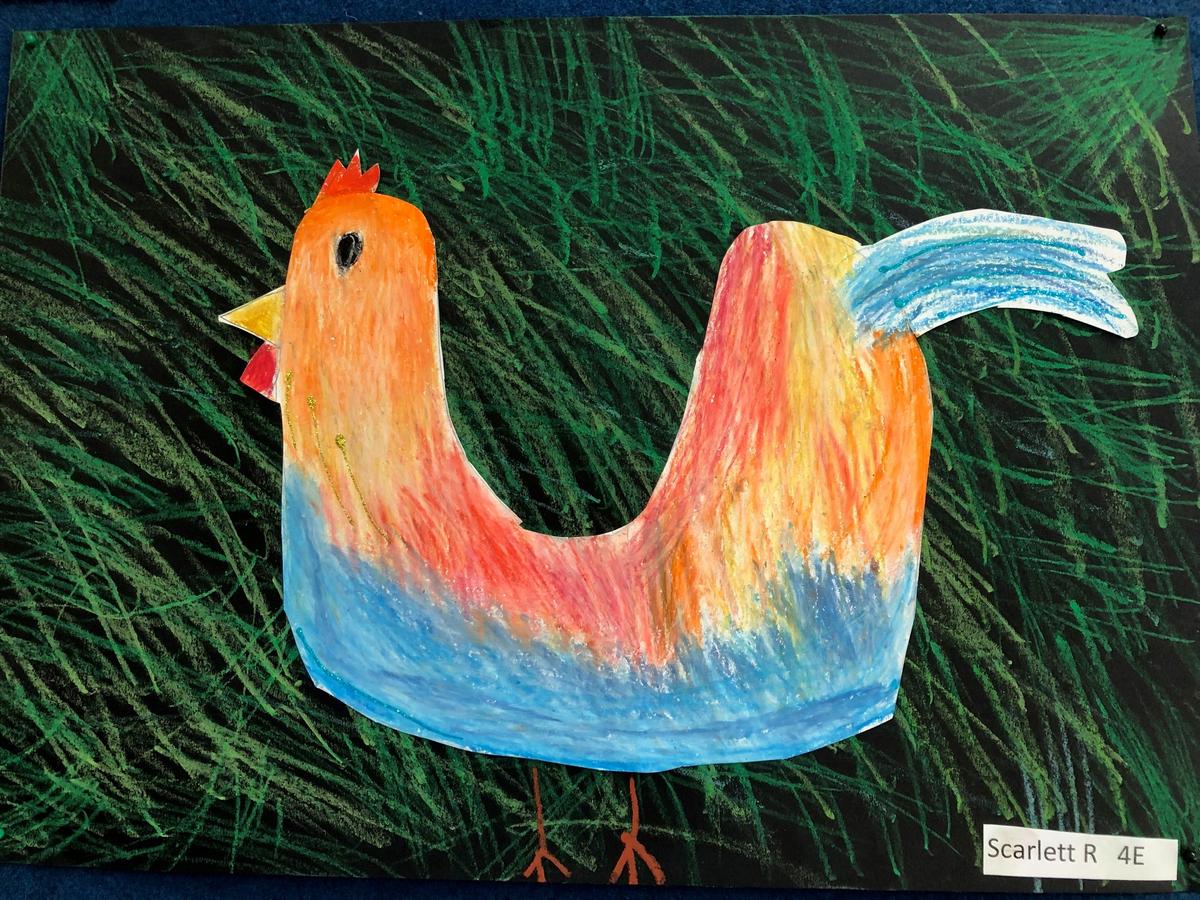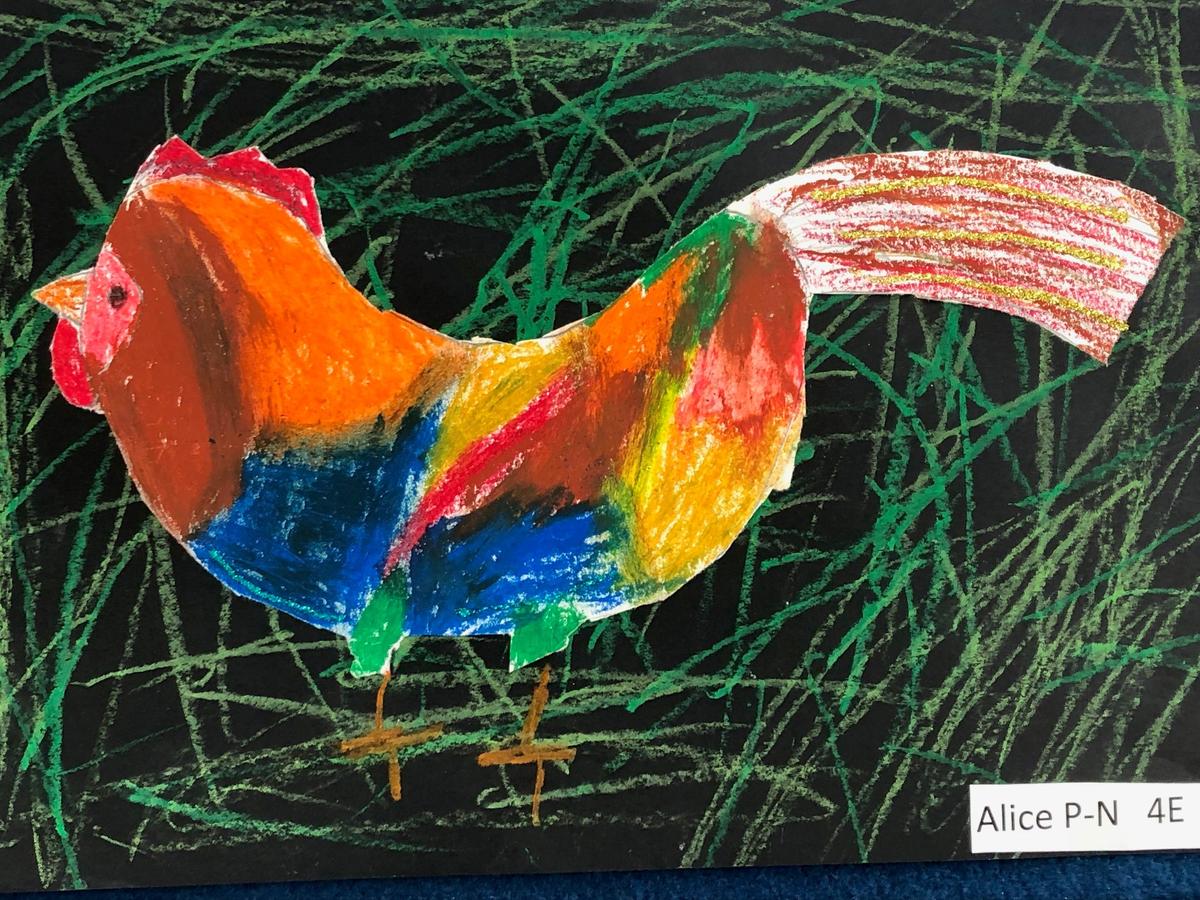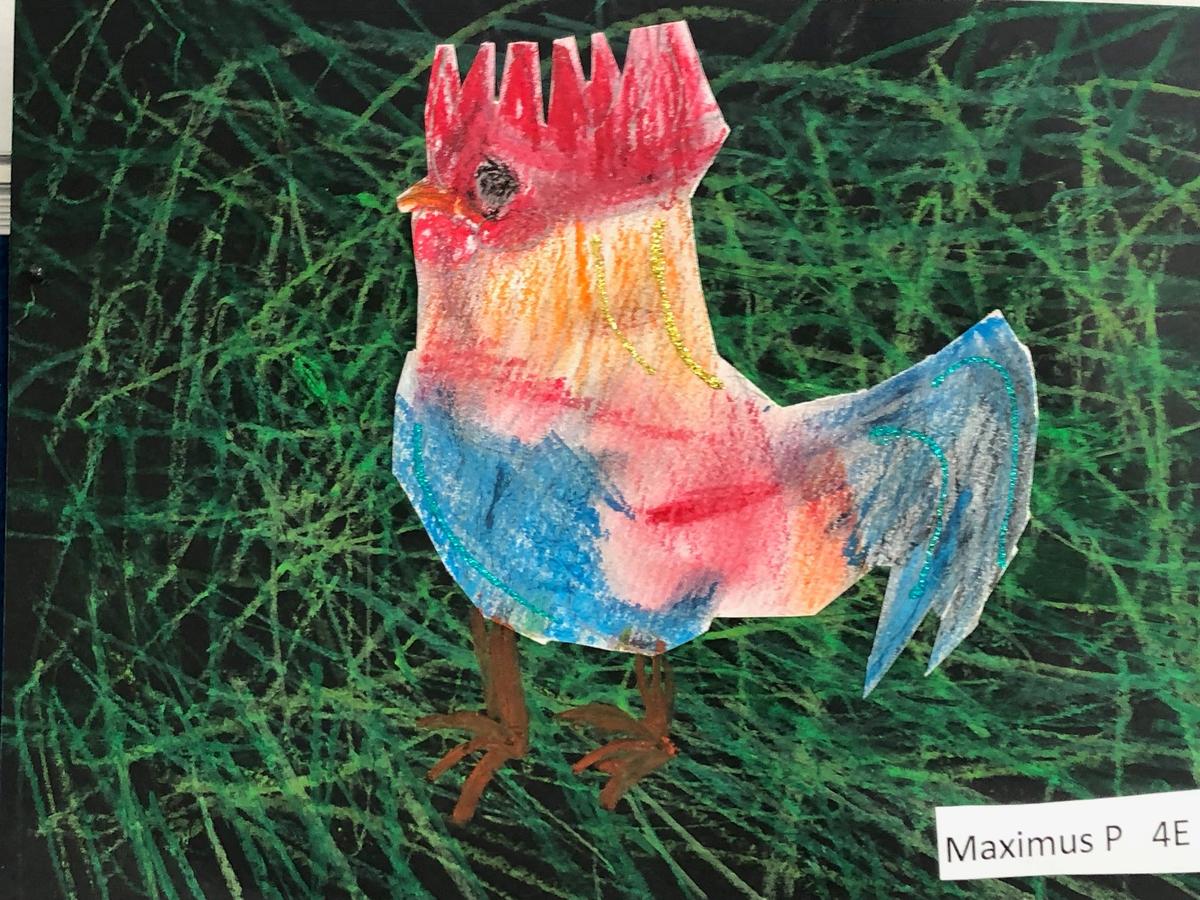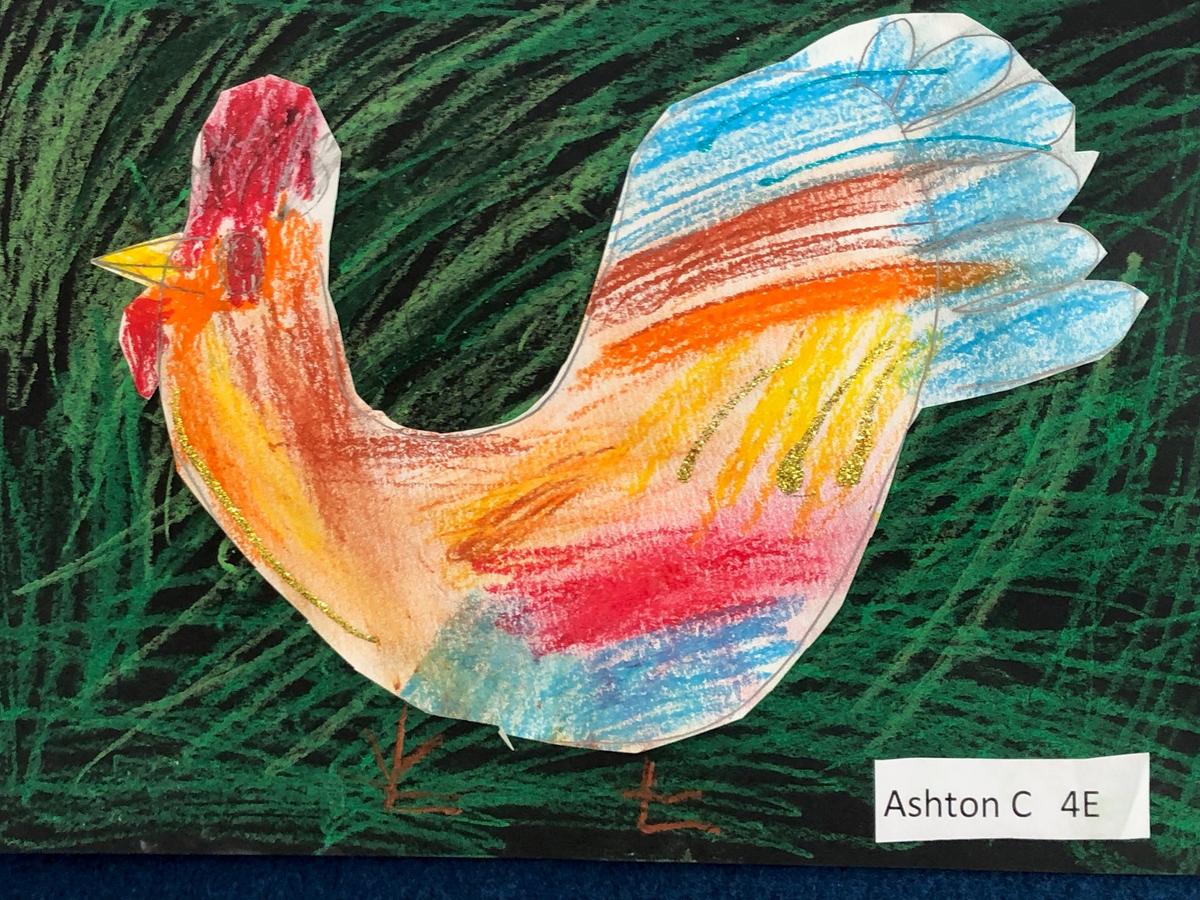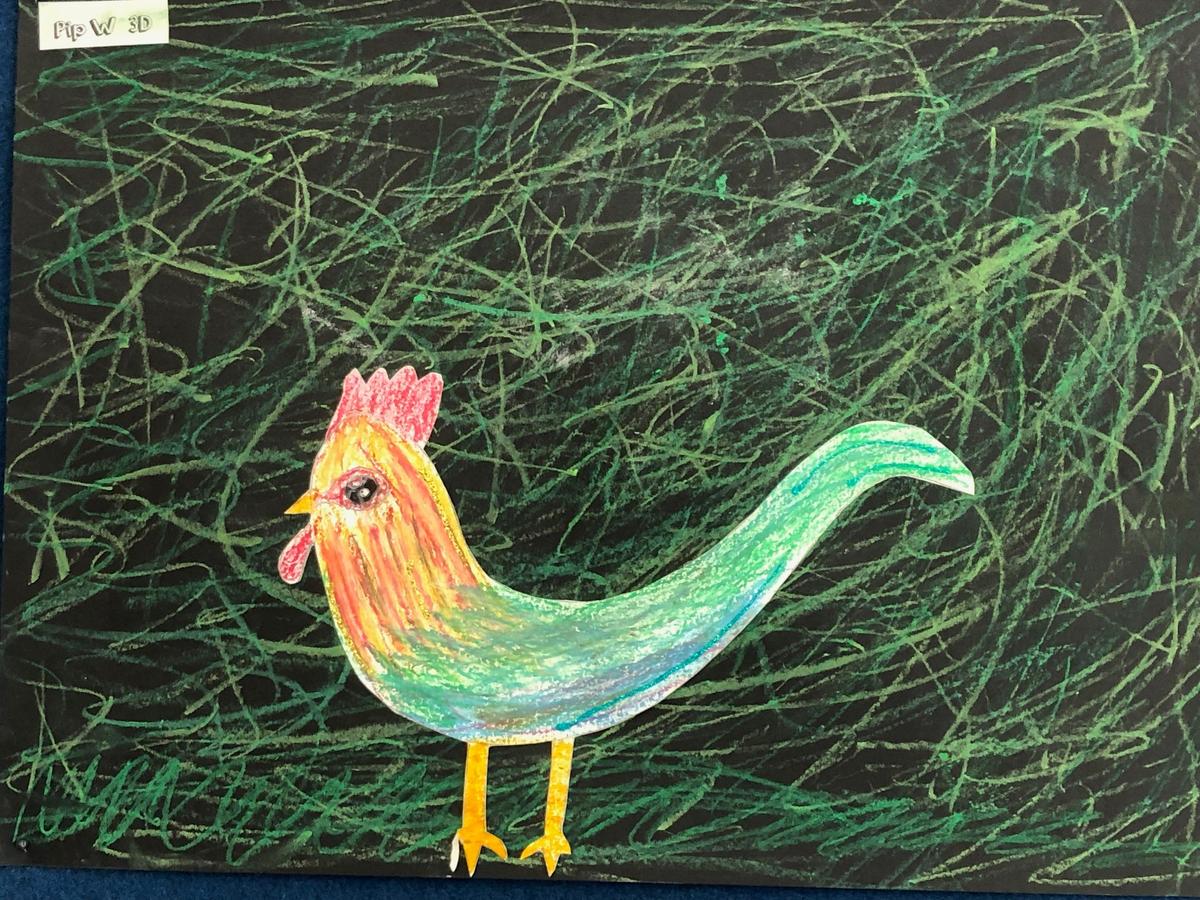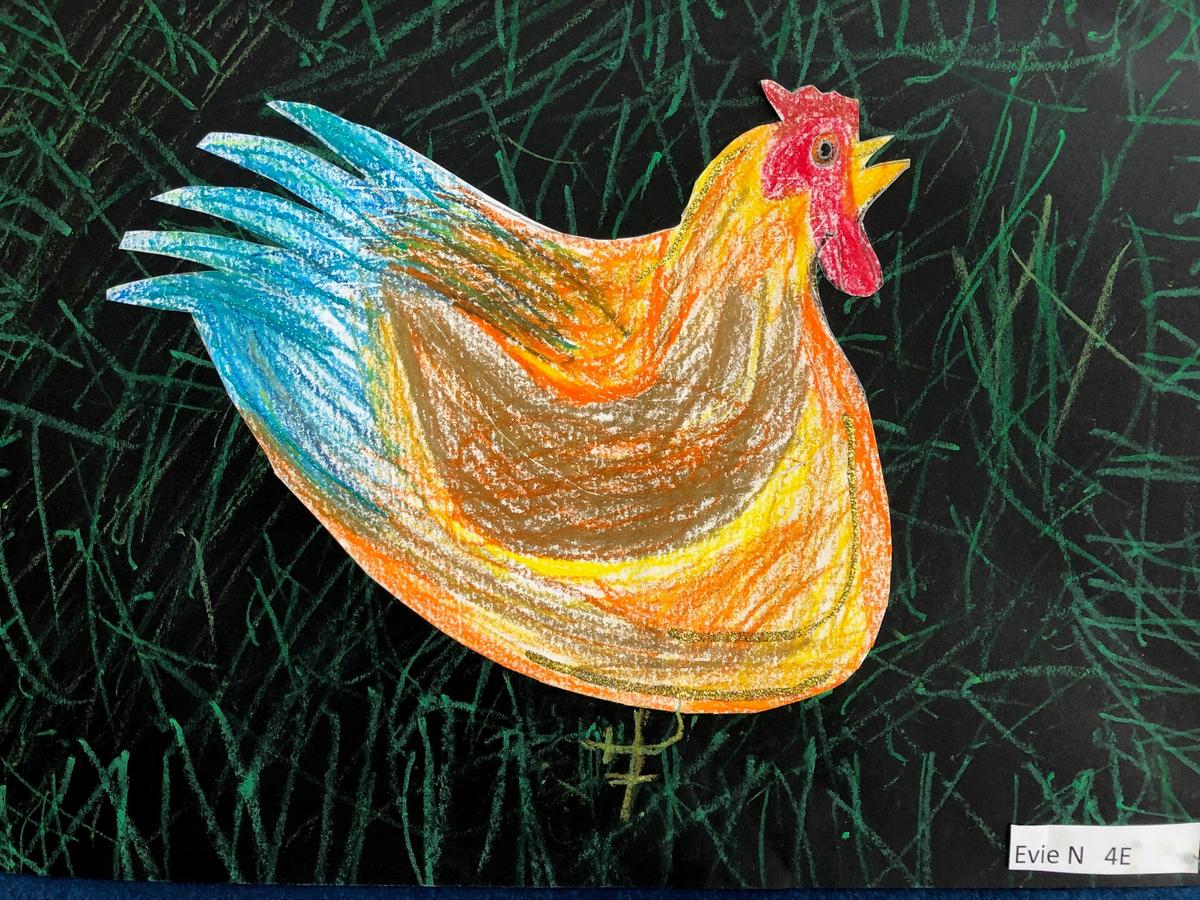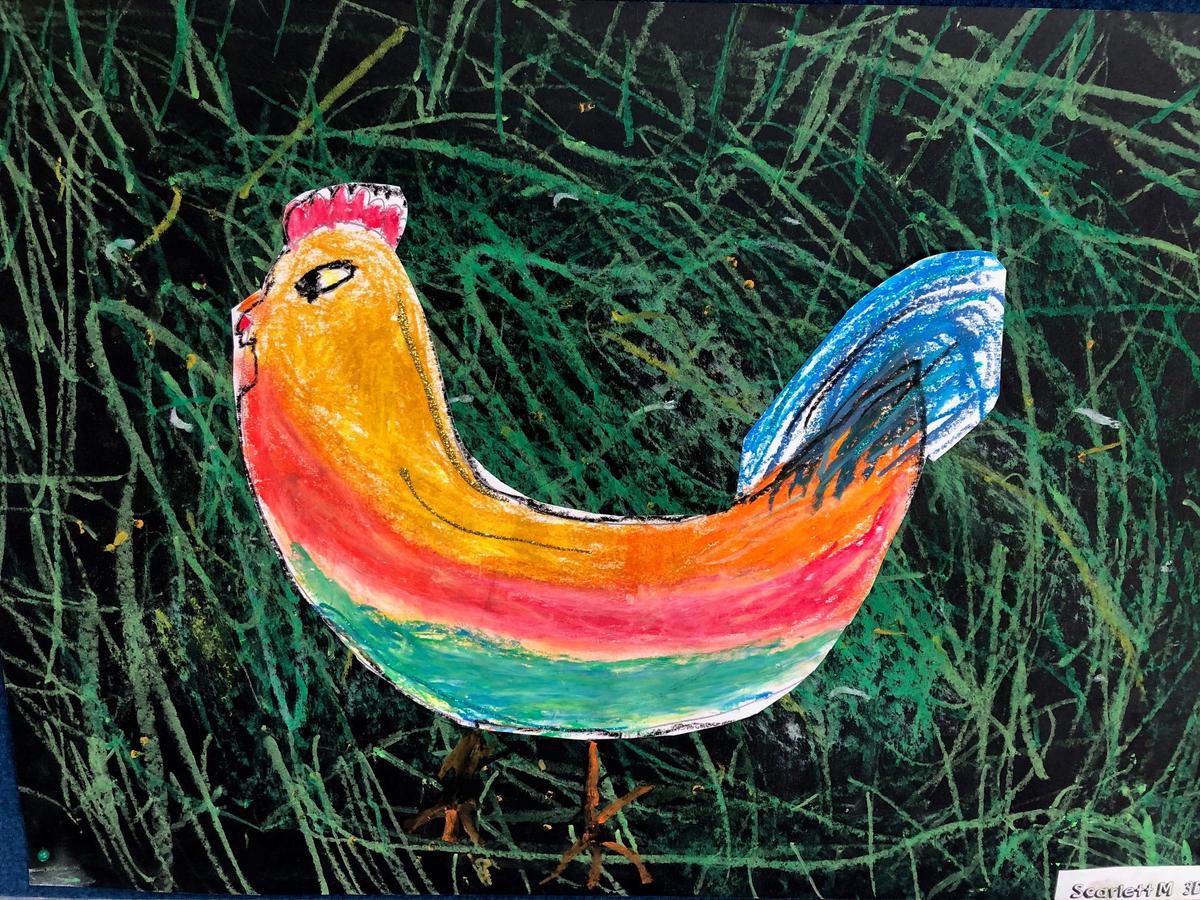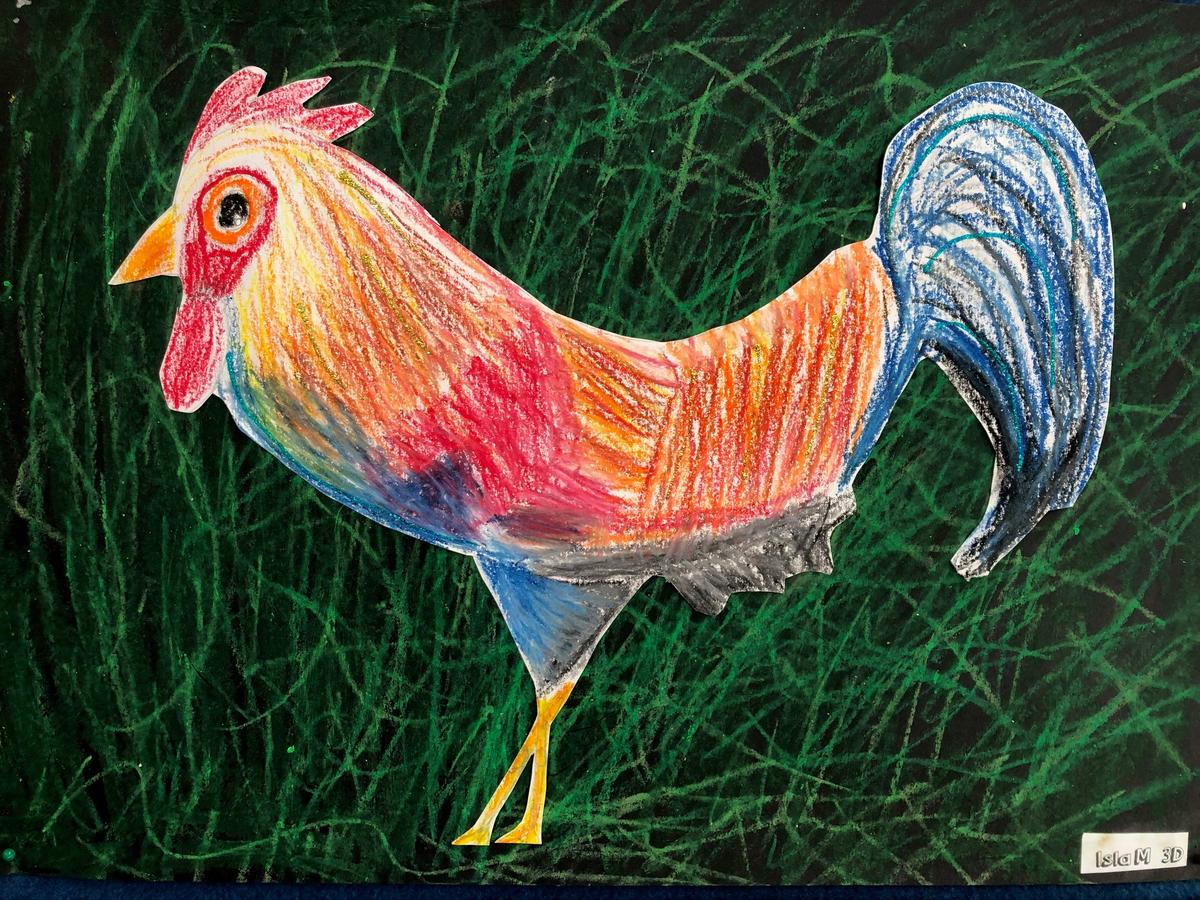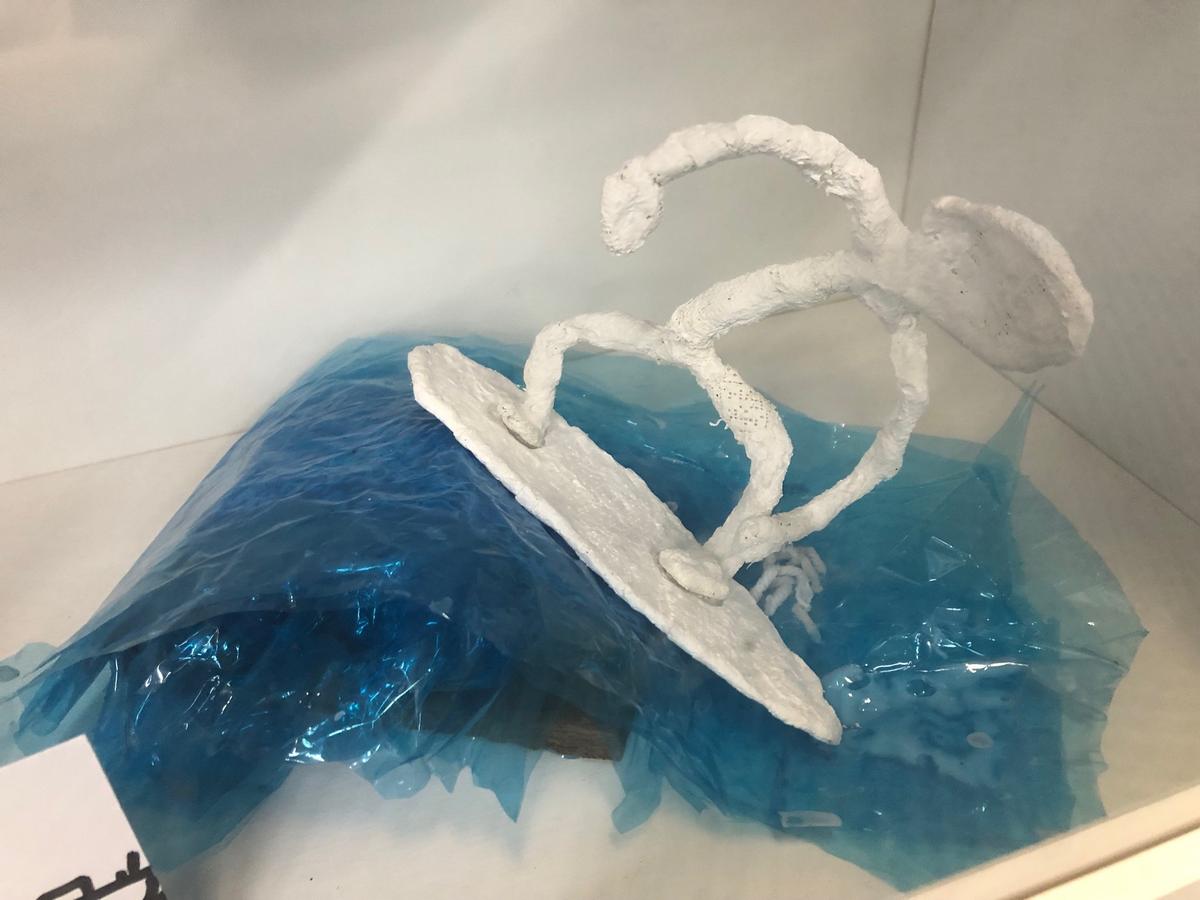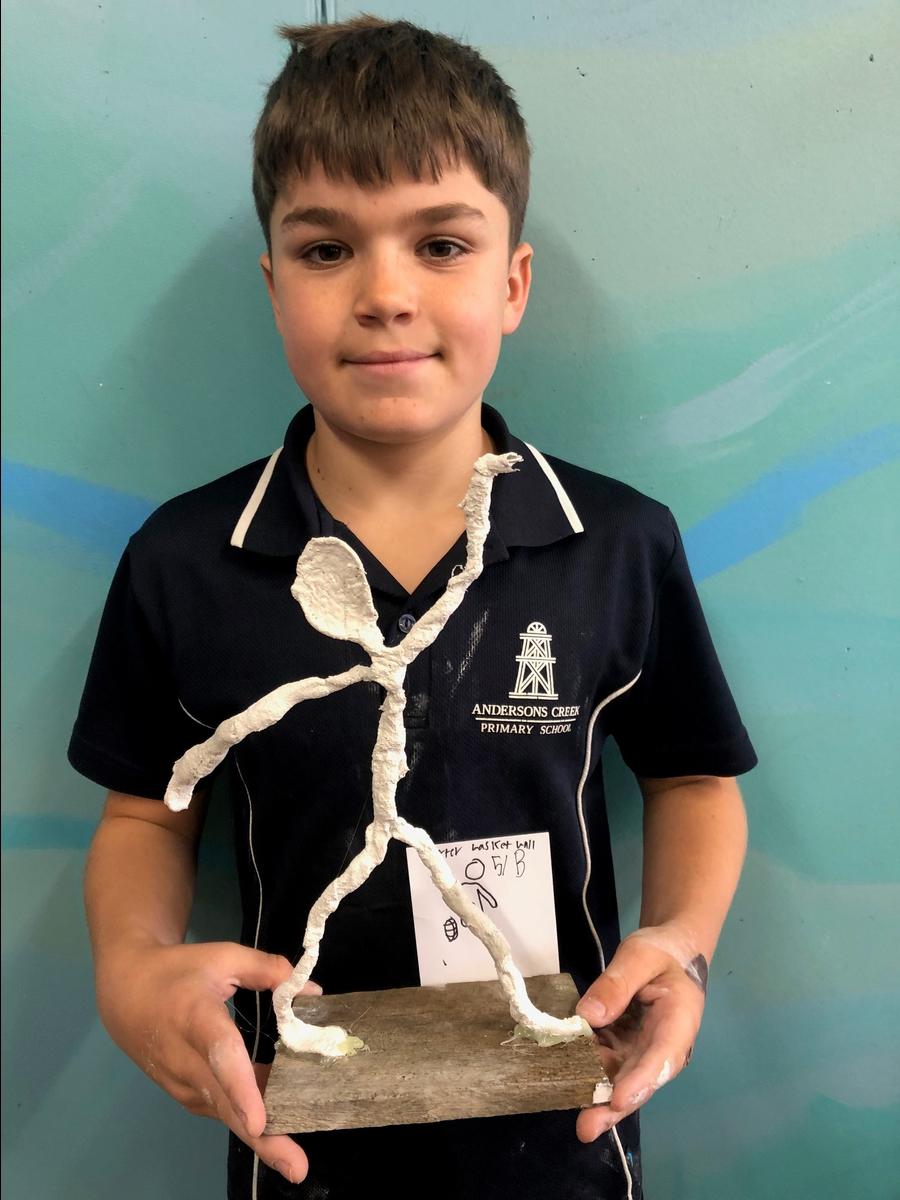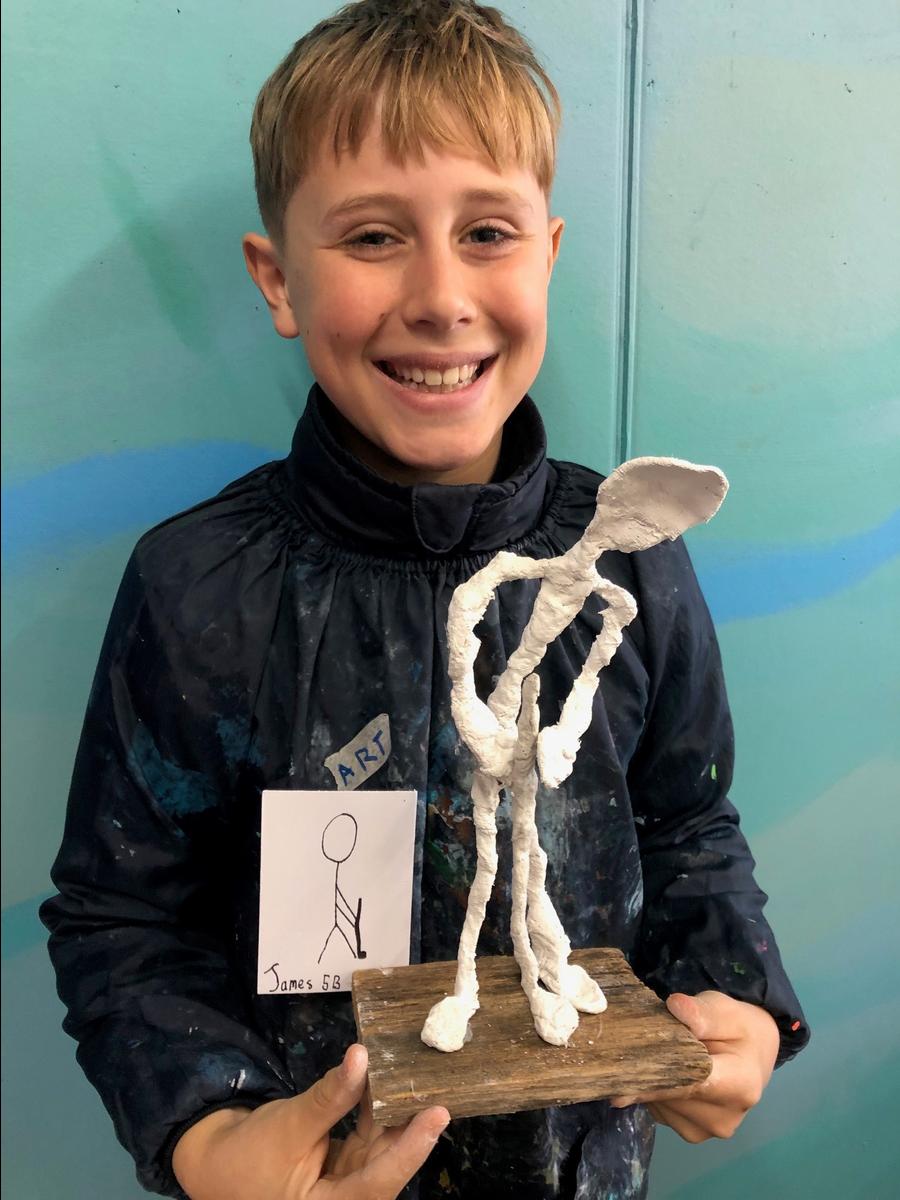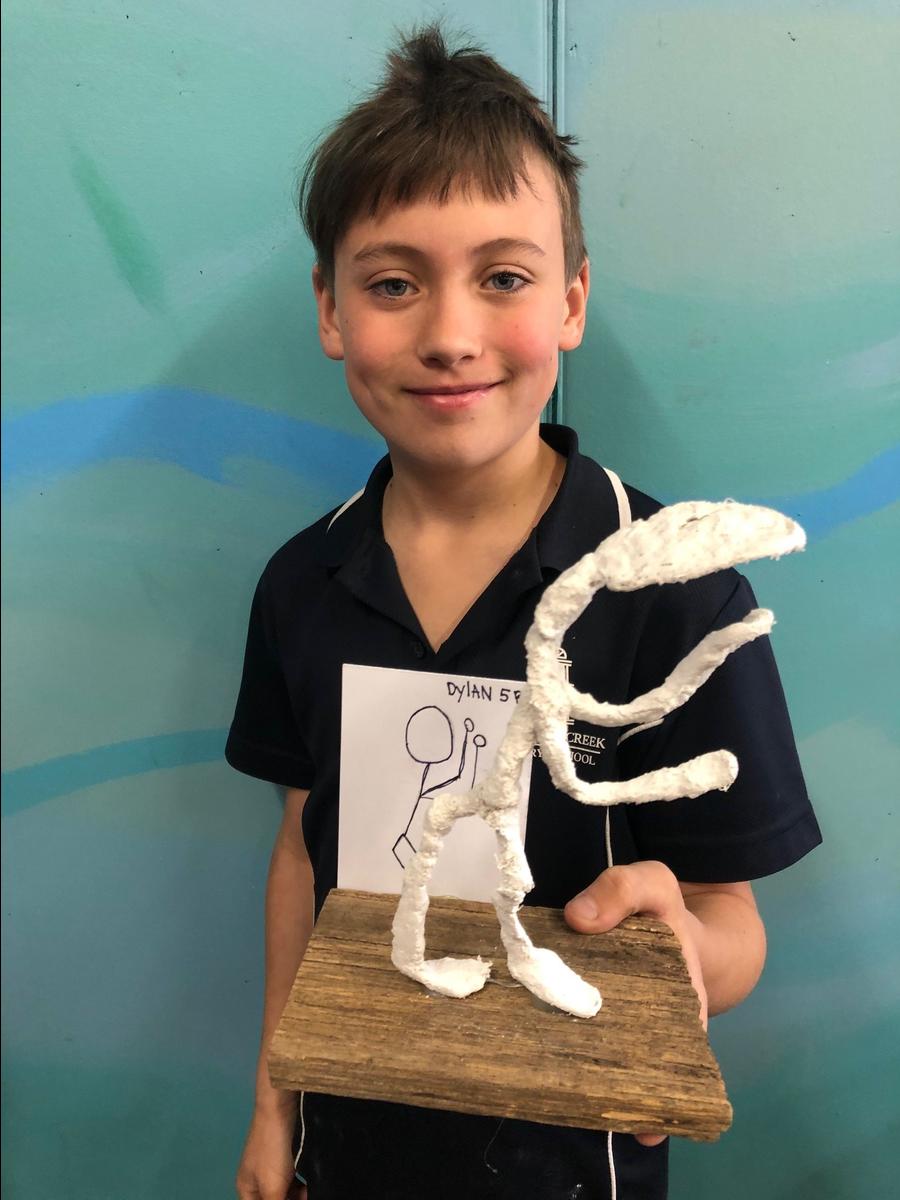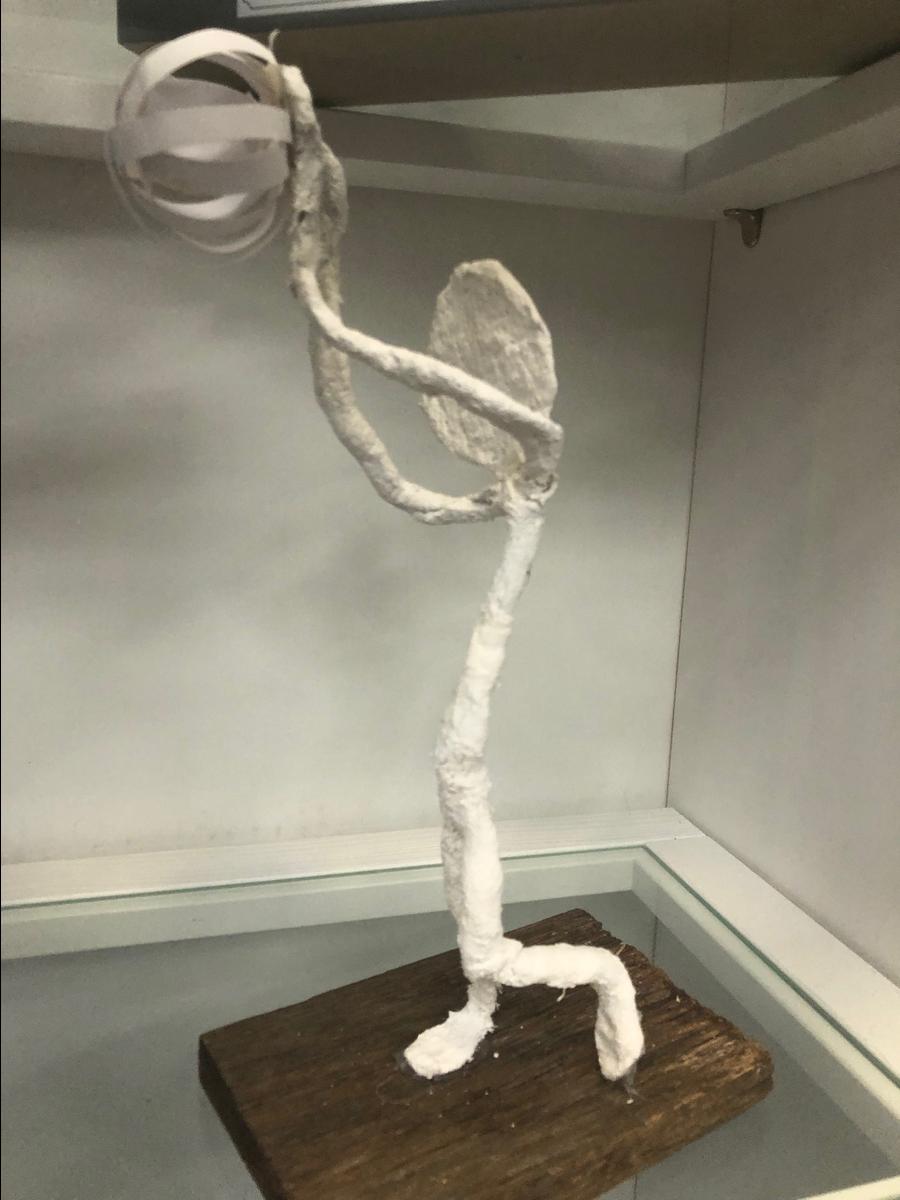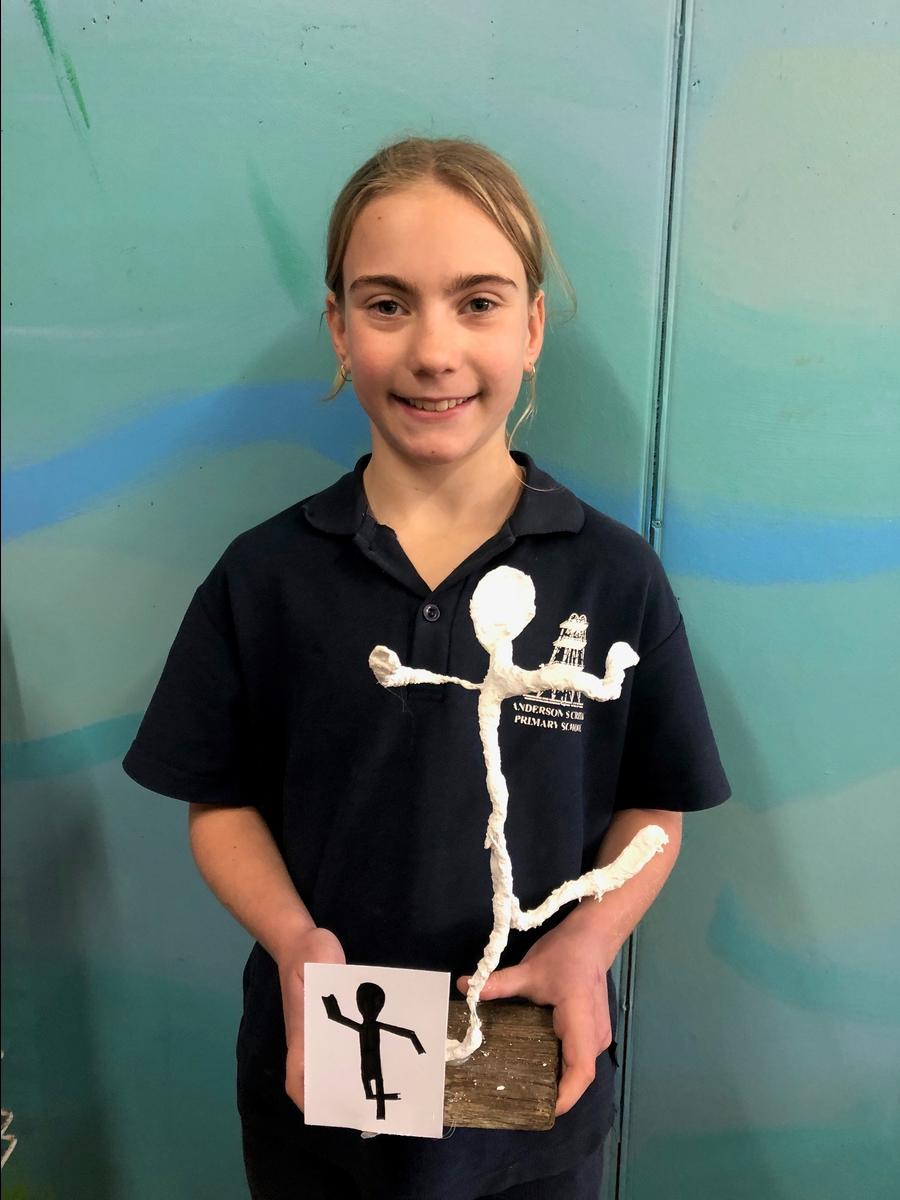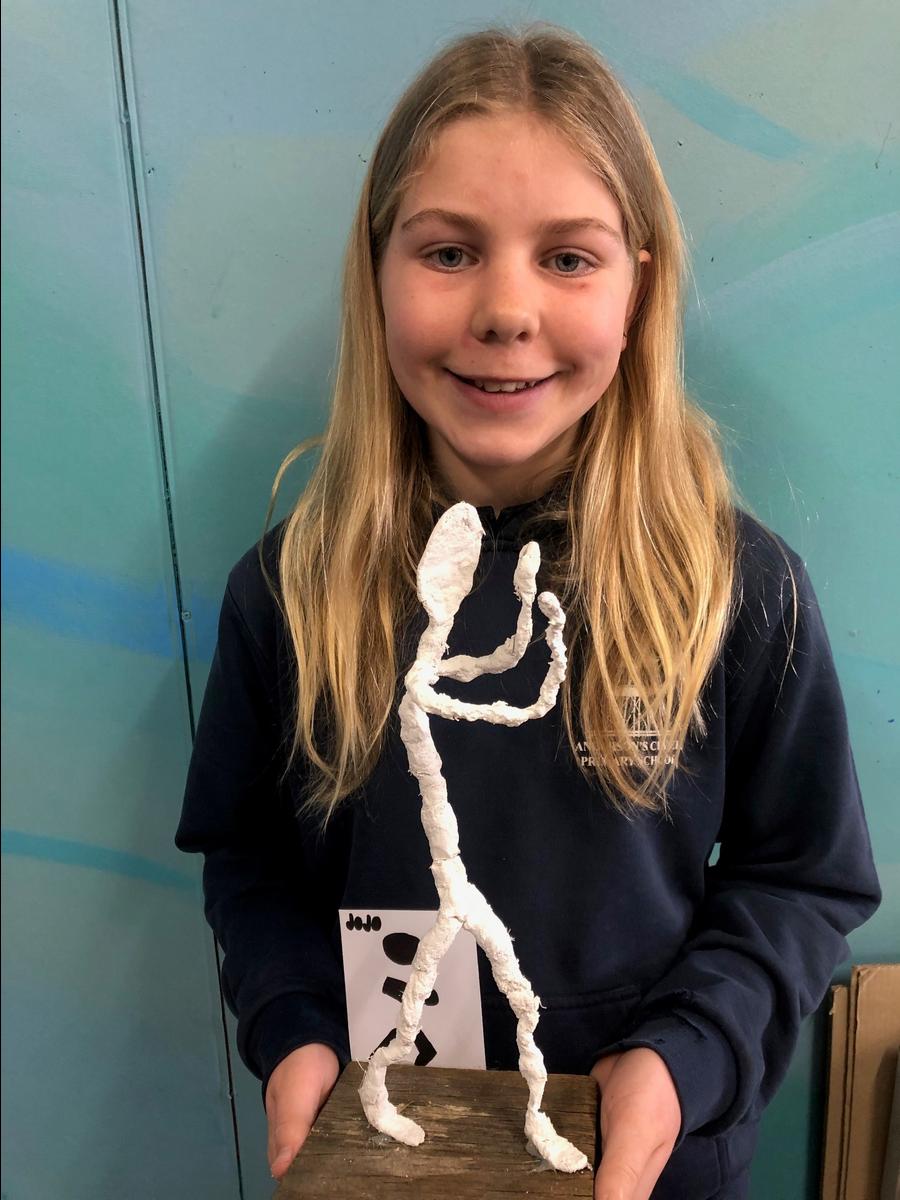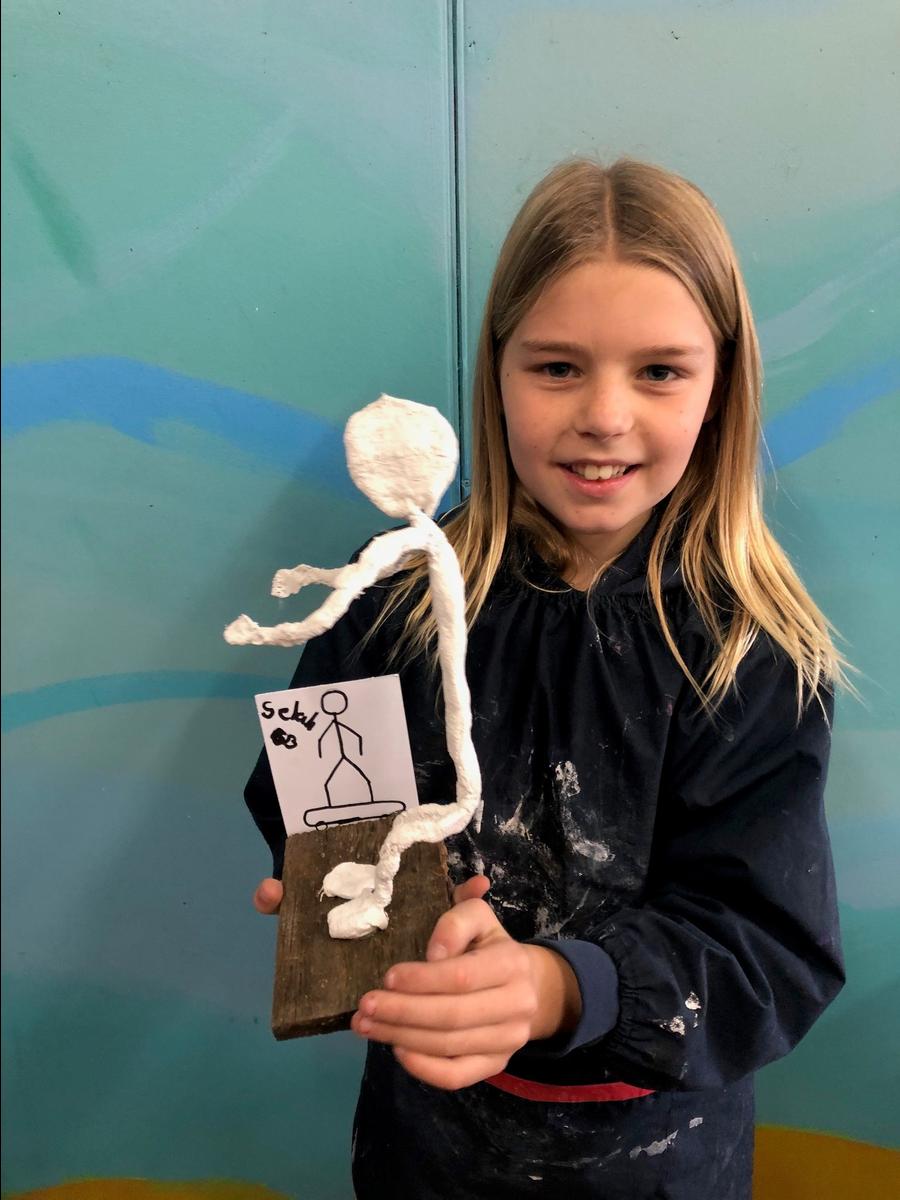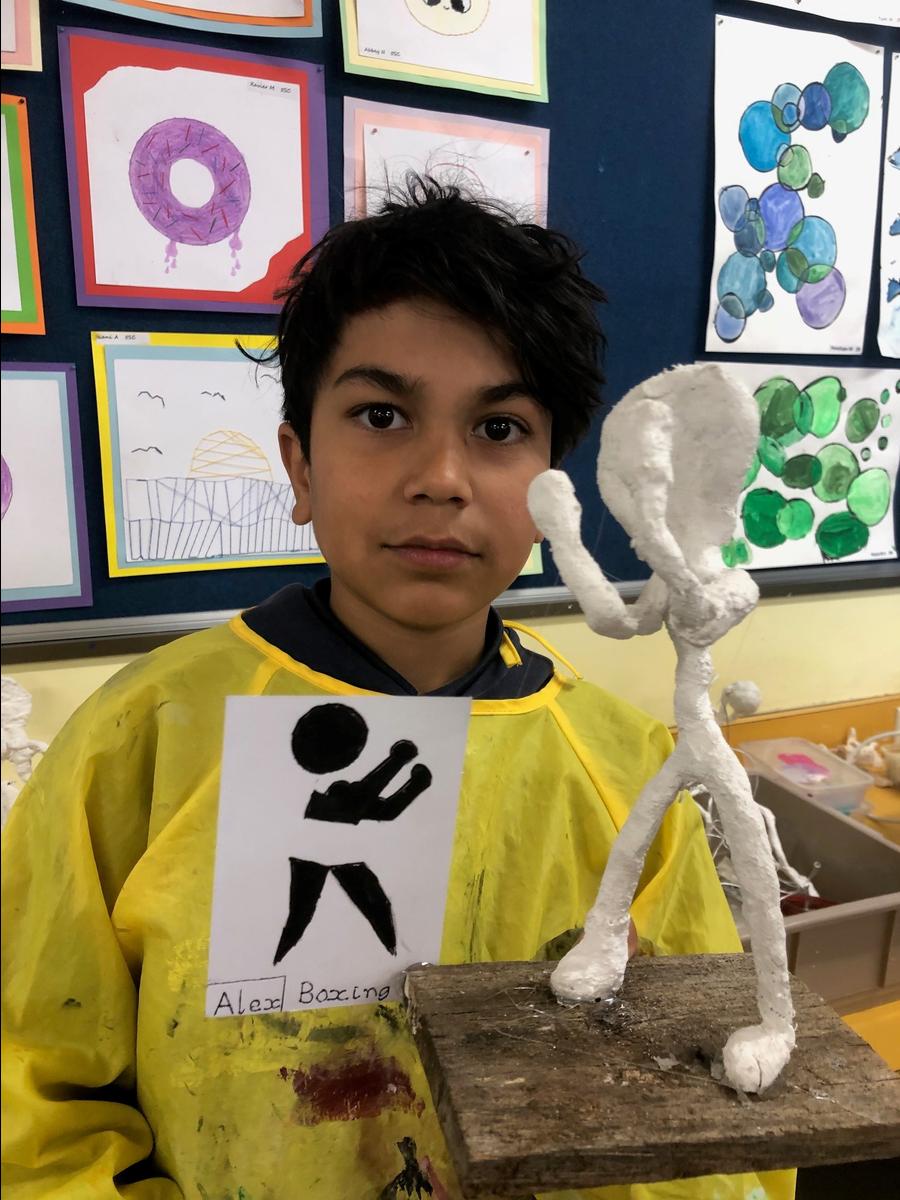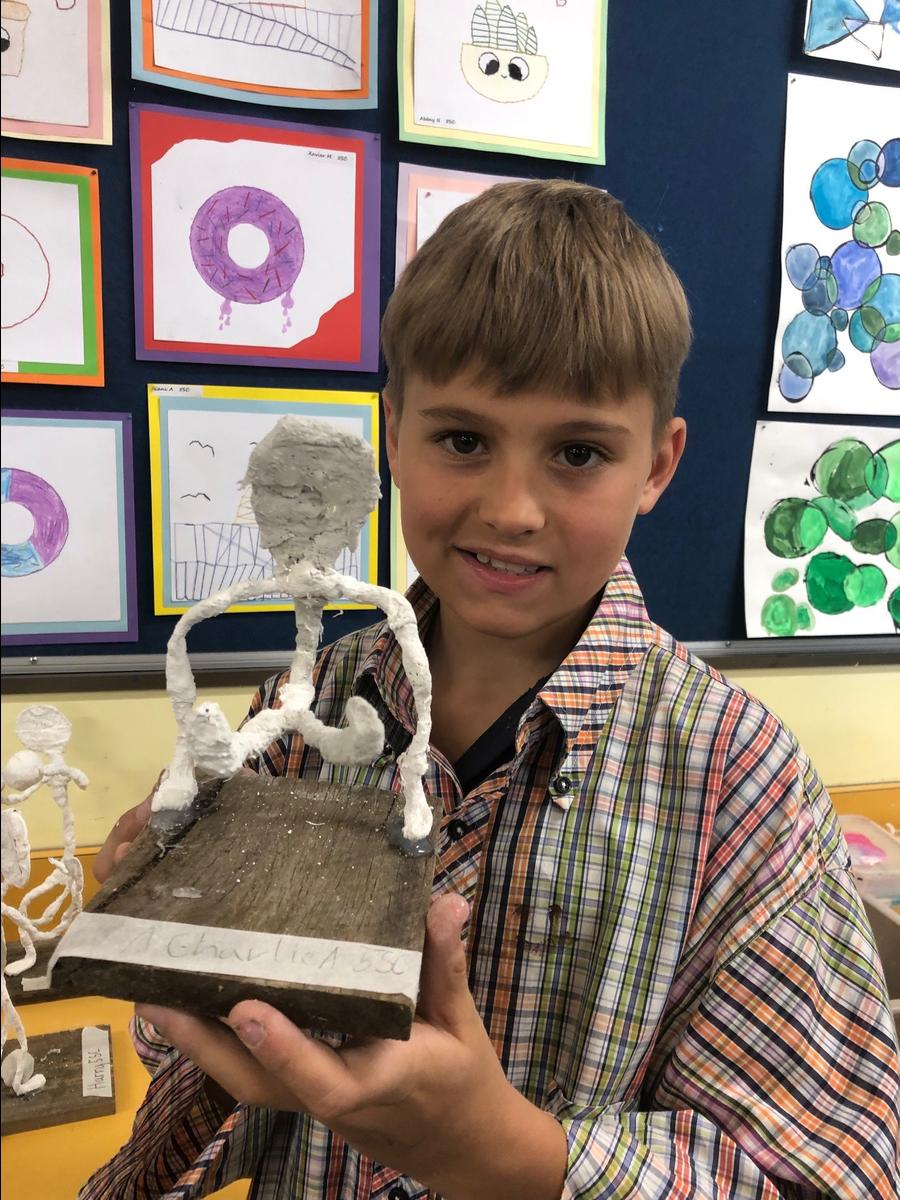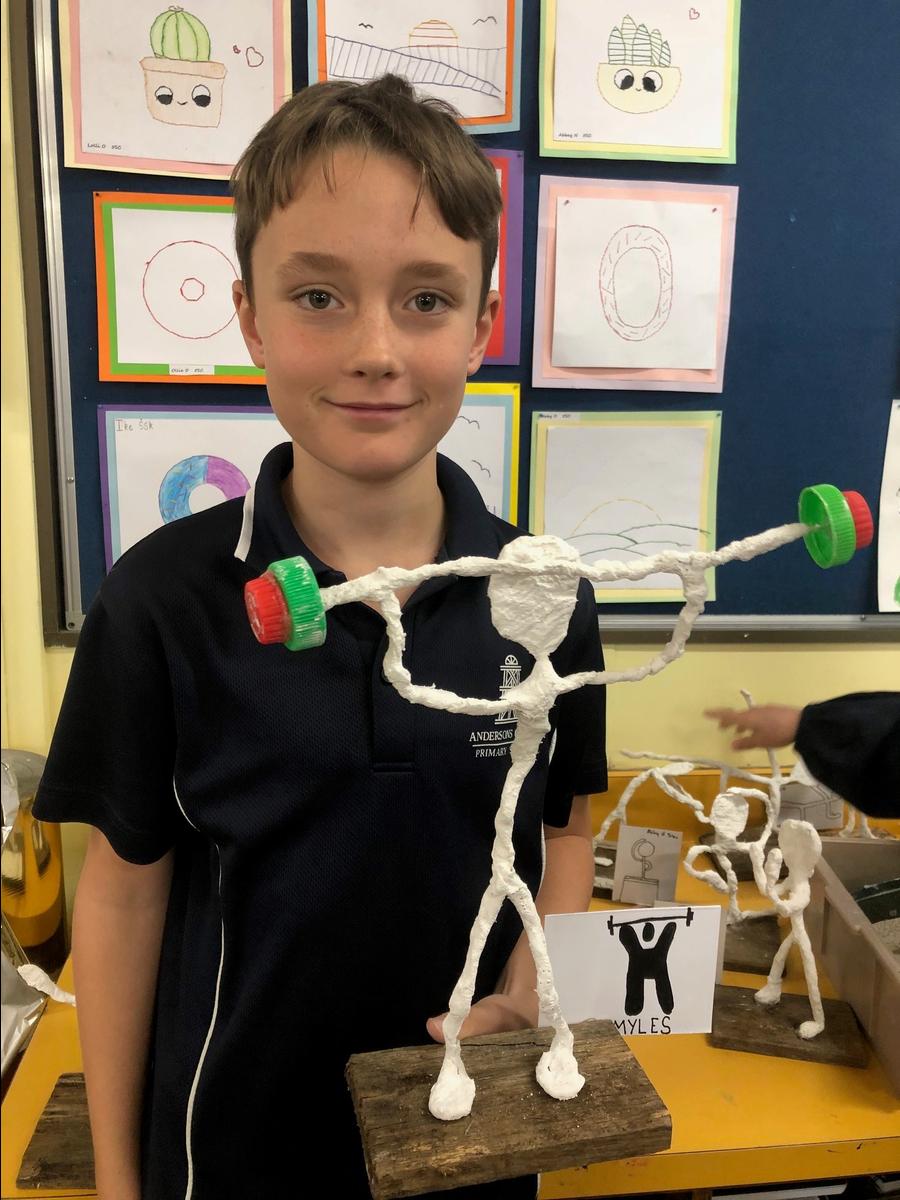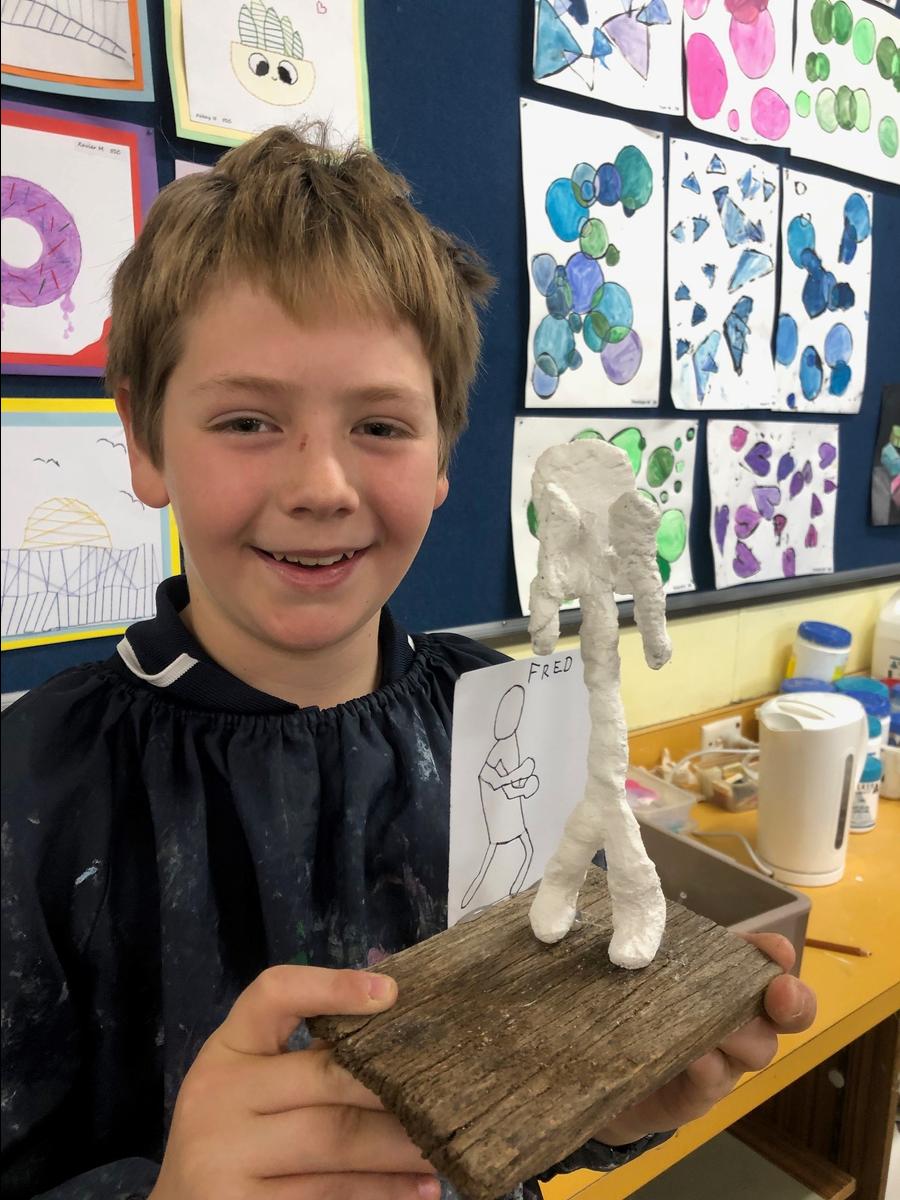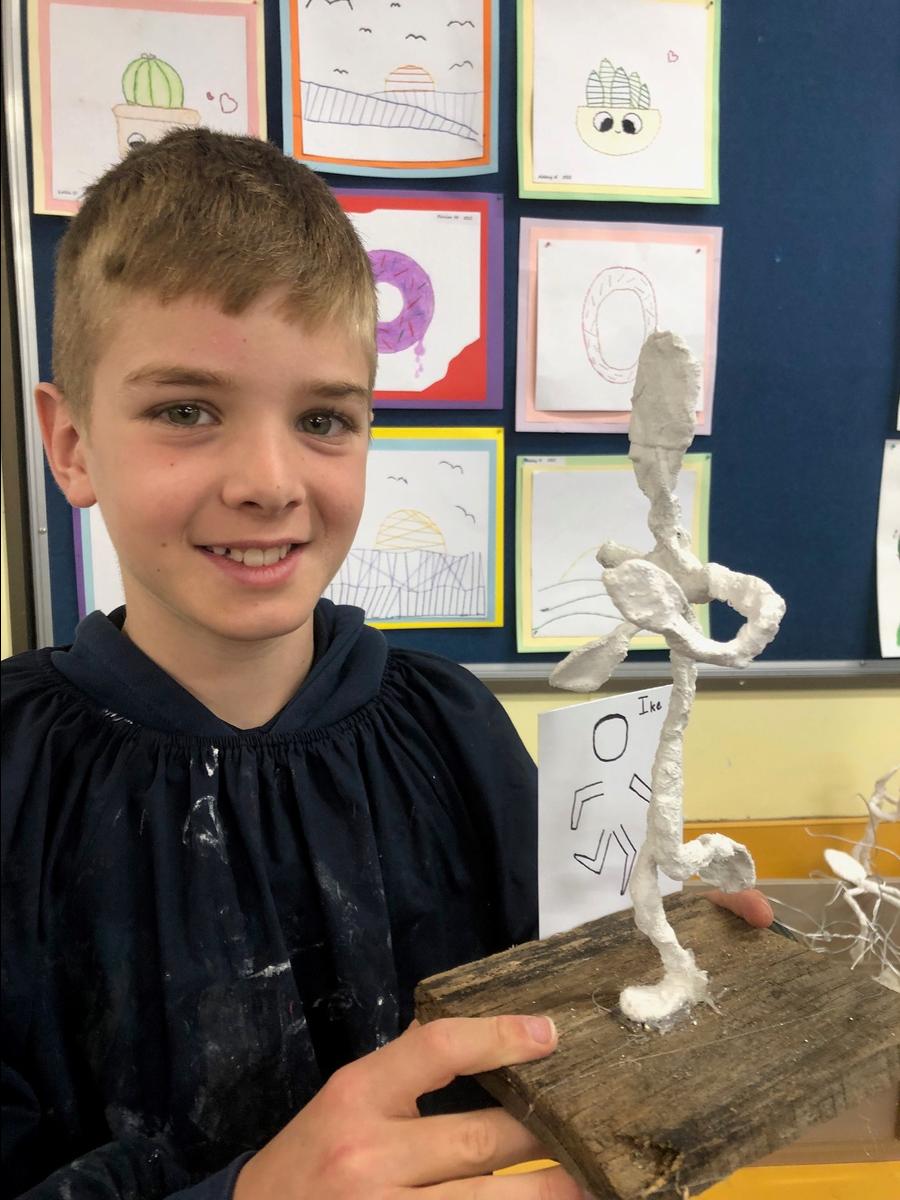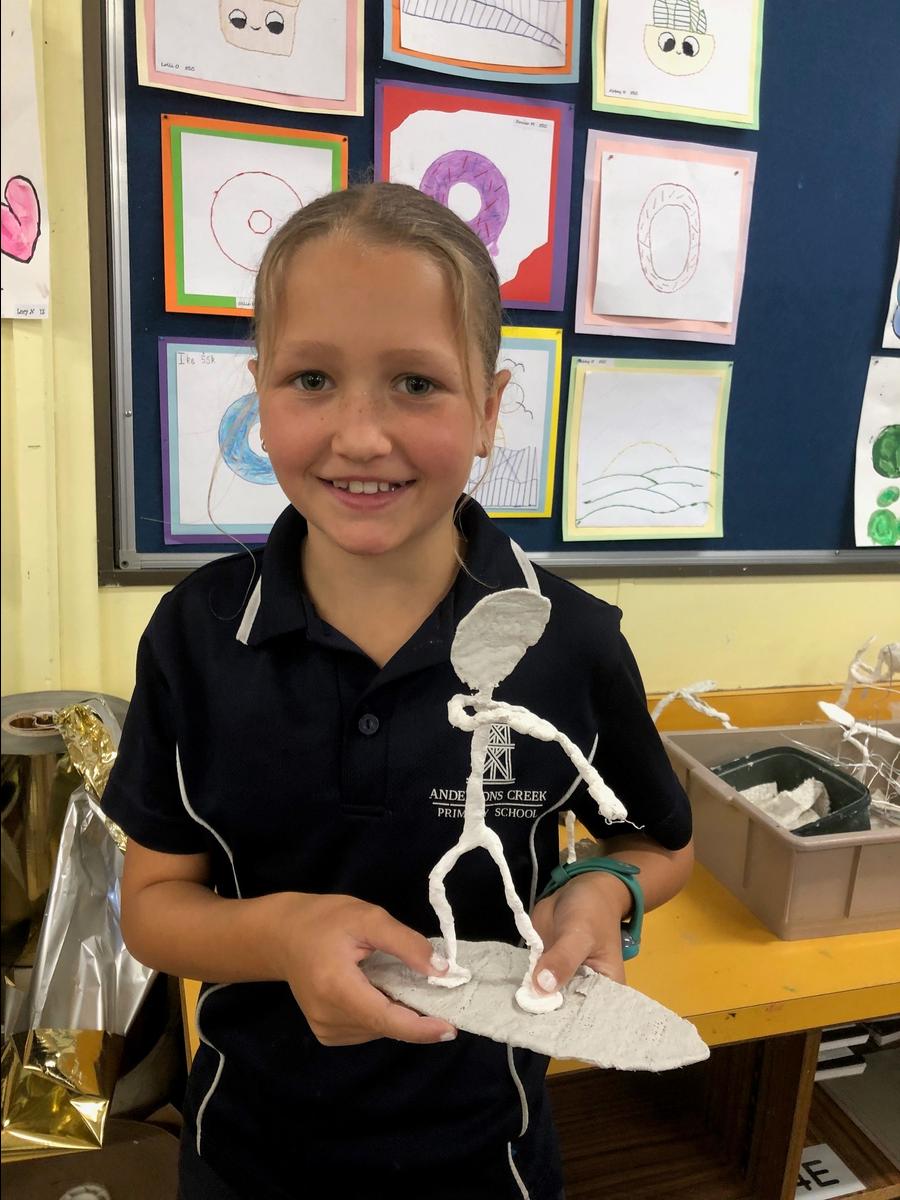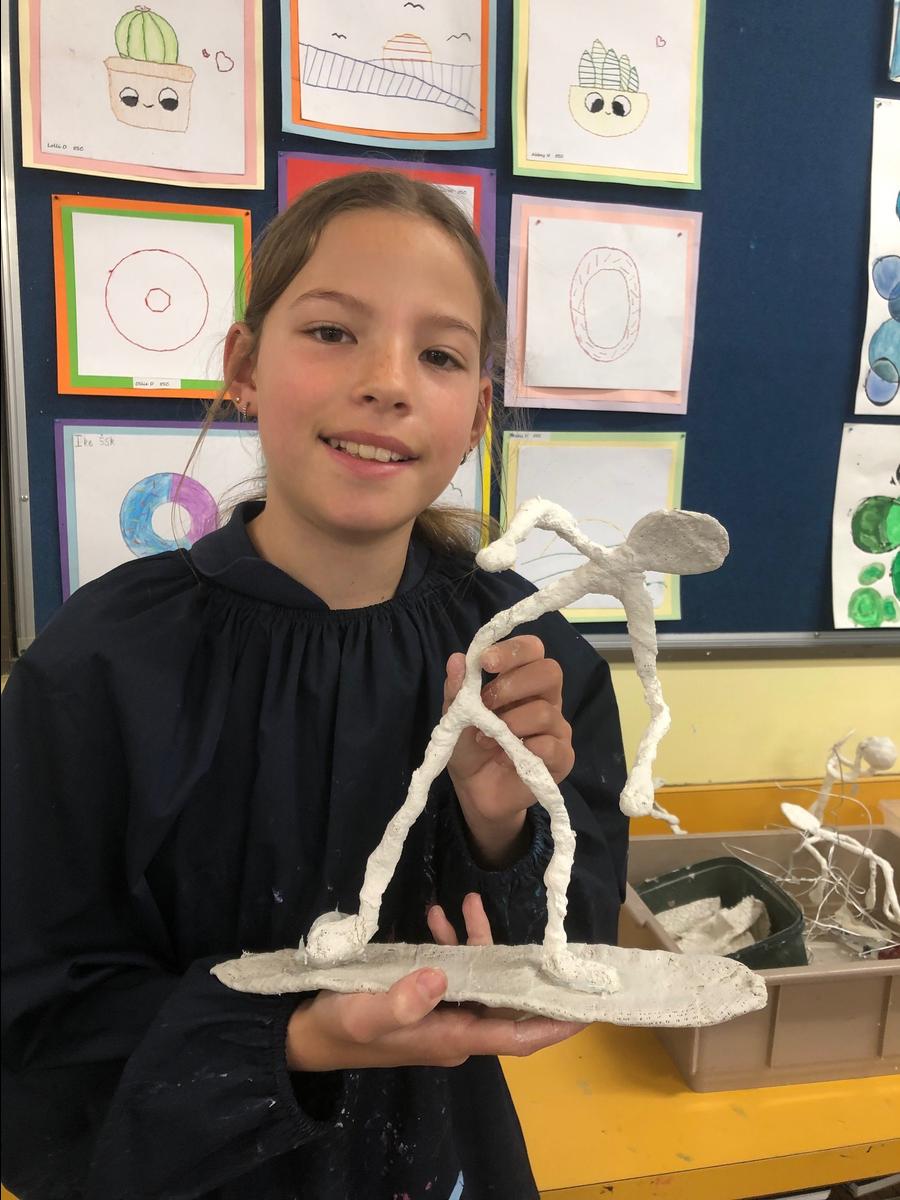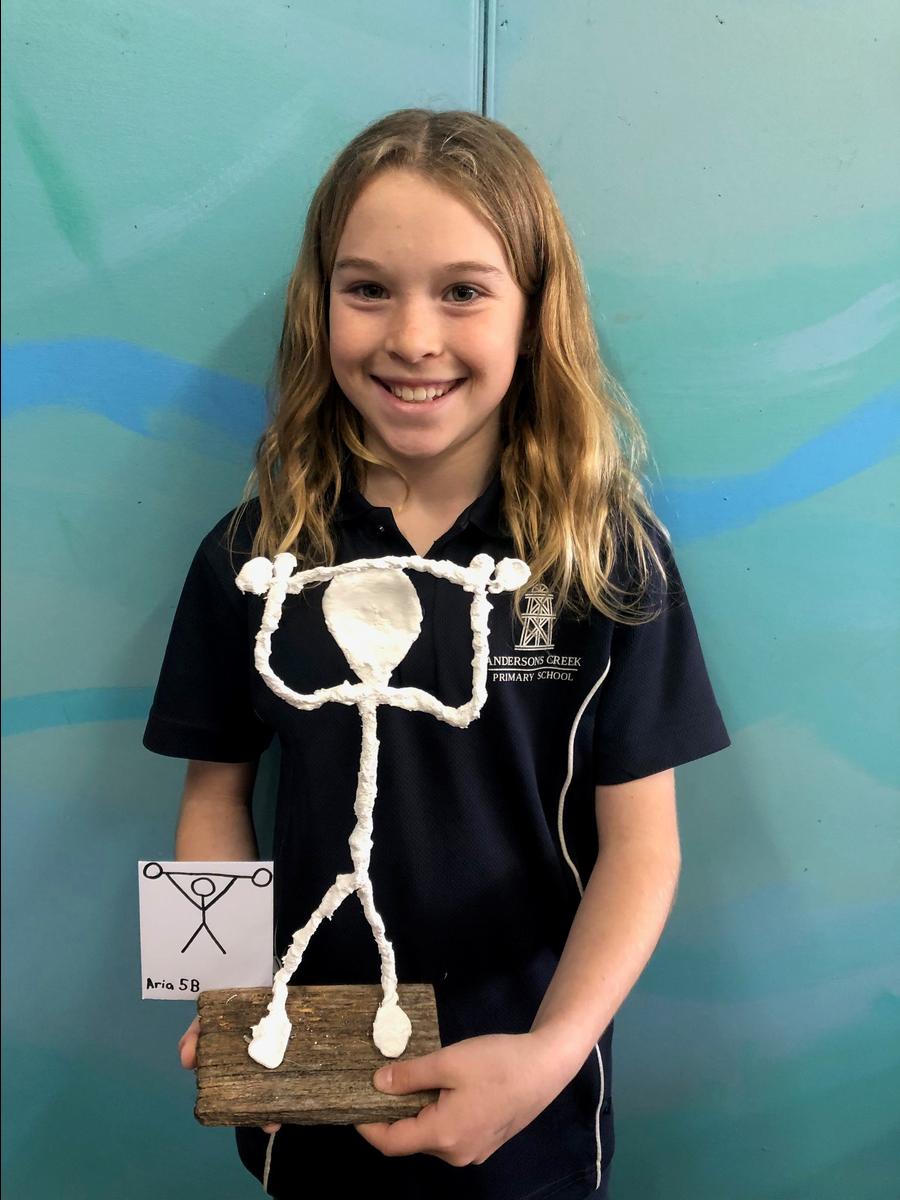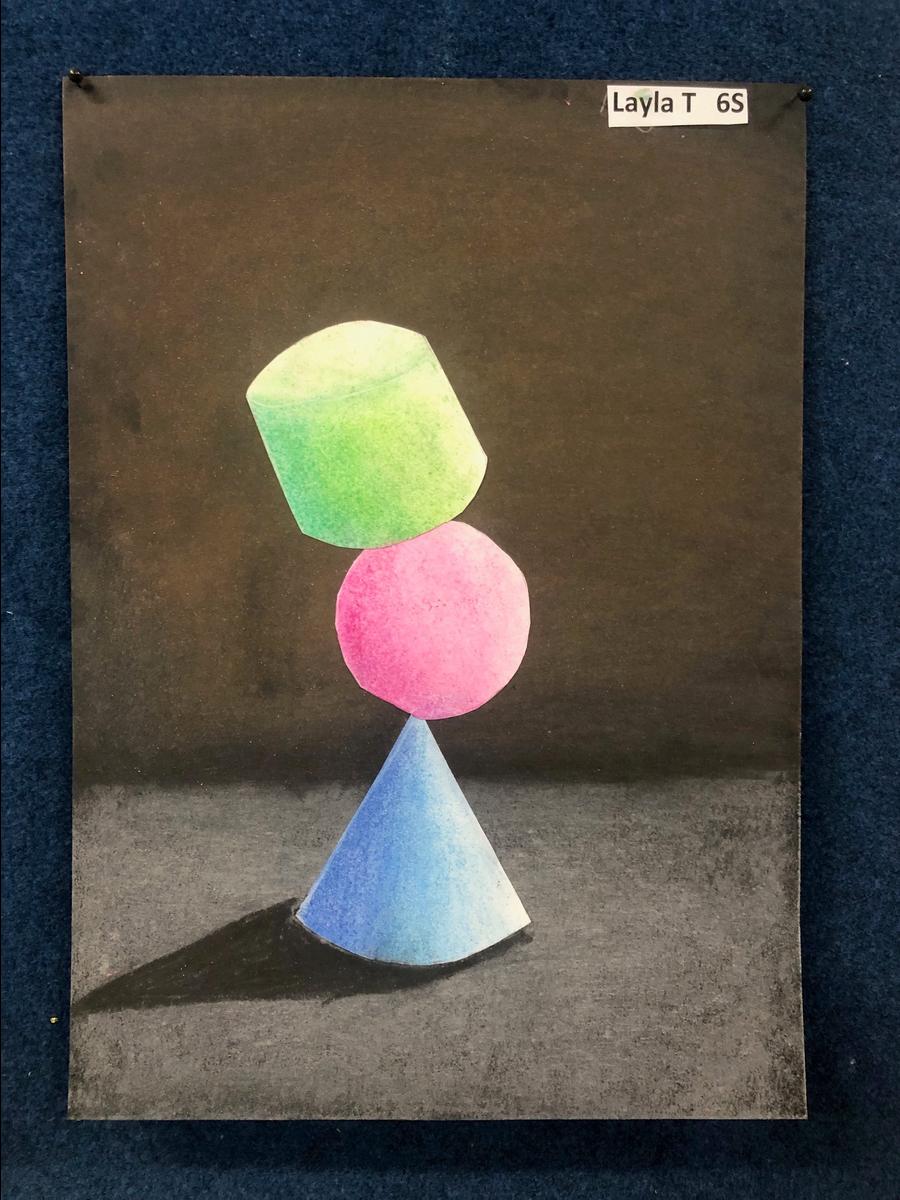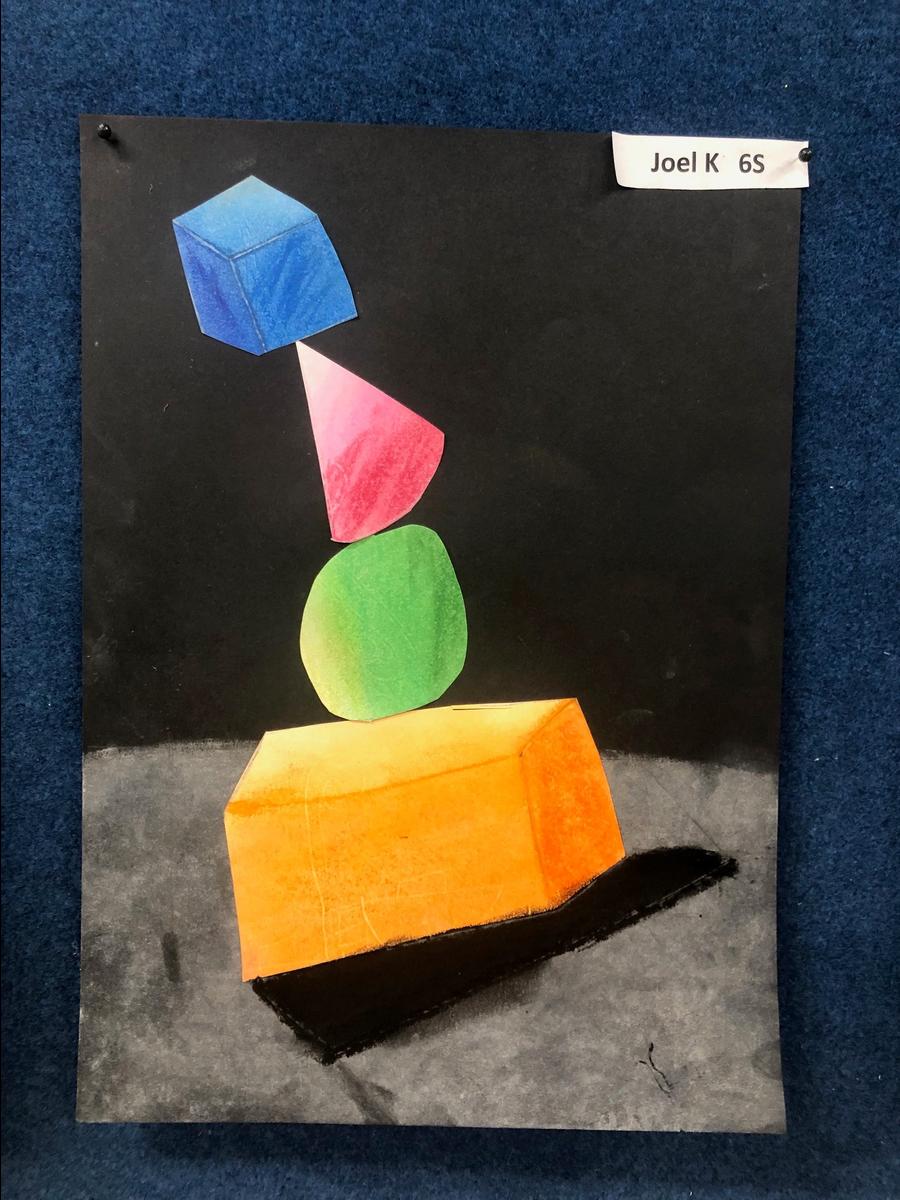Art

Olympics and other things in the art room
We have had fun focusing on the Olympics in the art room over these last few weeks. Students have explored some French culture as well as looking at the many sports that the Olympics, and now soon to be, Para Olympics offers.
Prep students had fun painting Eiffel Towers. They used mini rollers to paint half an Eiffel Tower then folded their page in half so they had a print of the entire, symmetrical Eiffel Tower. They painted a background of wide-brush strokes for grass, sky, and sunset. The following lesson saw students study the lines on the Eiffel Tower and draw similar lines on their own. They cut out their Towers and glued them onto their backgrounds.
Students in grades 1 and 2 have looked at 'The Lucky Shack' for book week this week. We began construction on our own lucky shack. The students folded, drew, ruled and cut the main part of their shack - a 4-panel piece complete with triangles and tabs for the roof to go on later. They are looking forward to joining their shack together and adding some decorations.
Students in grades 3 and 4 made clay dogs - parce que le français adorent leurs chiens!
It is well known that the French have a love of dogs, and so we made our own dogs in honour of this vibrant part of French culture. Students rolled out a slab of clay and then formed it into a dog. The clay had dried and underwent its first firing in the kiln - the bisque firing. This week it was ready for the students to glaze. These photos show some clay dogs waiting to be glazed by students, some glazing action in process, and the finished glazed dogs on a shelf in the kiln waiting to be fired. The white colour on the finished dogs means that these have been coated with a gloss glaze. When the firing has been completed, the white glaze will be shiny and will be transparent to show the real glaze colour underneath.
We also engaged in construction and made some Eiffel Towers....
These students had also focused on French culture in their making of the Gallic Rooster. They explored shape and colour through blending oil pastels to make their Coq Gaulois, or the Gallic Rooster. This French rooster is a symbol of hope and faith and can be seen in many places in France. As promised, some photos of their work...
Students in grades 5 and 6 have been busy using wire to model an armature, which is an open framework on which a sculpture is moulded. Students modelled their wire into a human body. They looked at body proportions initially to make their armature realistic, and looked at where half-way on a human body usually is, how long arms are, how big feet are, and all the places that bend (necks, shoulders, elbows, wrists, fingers, hips etc.) They had to ensure their wire body looked in proportion before then modelling it into a pose from an Olympic sport. Students made Olympians such as gymnasts, divers, basketball players, runners, hockey players, surfers, trampolinists, break dancers and swimmers. After the pose was modelled into position, with careful attention being paid to where the joints were bending, students had a lot of fun using plaster of paris to mould and wrap around their armature. Their finished sculptures were glued on to a rustic wood base.
Grade 6 students have also been busy making shape towers. Theyused soft pastels to draw and blend some 3D shapes. They had to imagine the direction of a light source and shade in such a way as to identify the darker parts (shades) and lighter parts (tints) of their 3D object. These lights and darks are known as the value of a particular colour. It is the value and the directionality of the shading that helps the object look 3D. Students drew a variety of shapes in their Visual Diaries and once the shapes were drawn and coloured, students cut them out and placed them in a shape stack onto black paper. In their Visual Diaries, they practised exploring how a shadow would fall based on their imagined light source. A lot of maths comes into play when we explored how long and wide to make the shadow.

